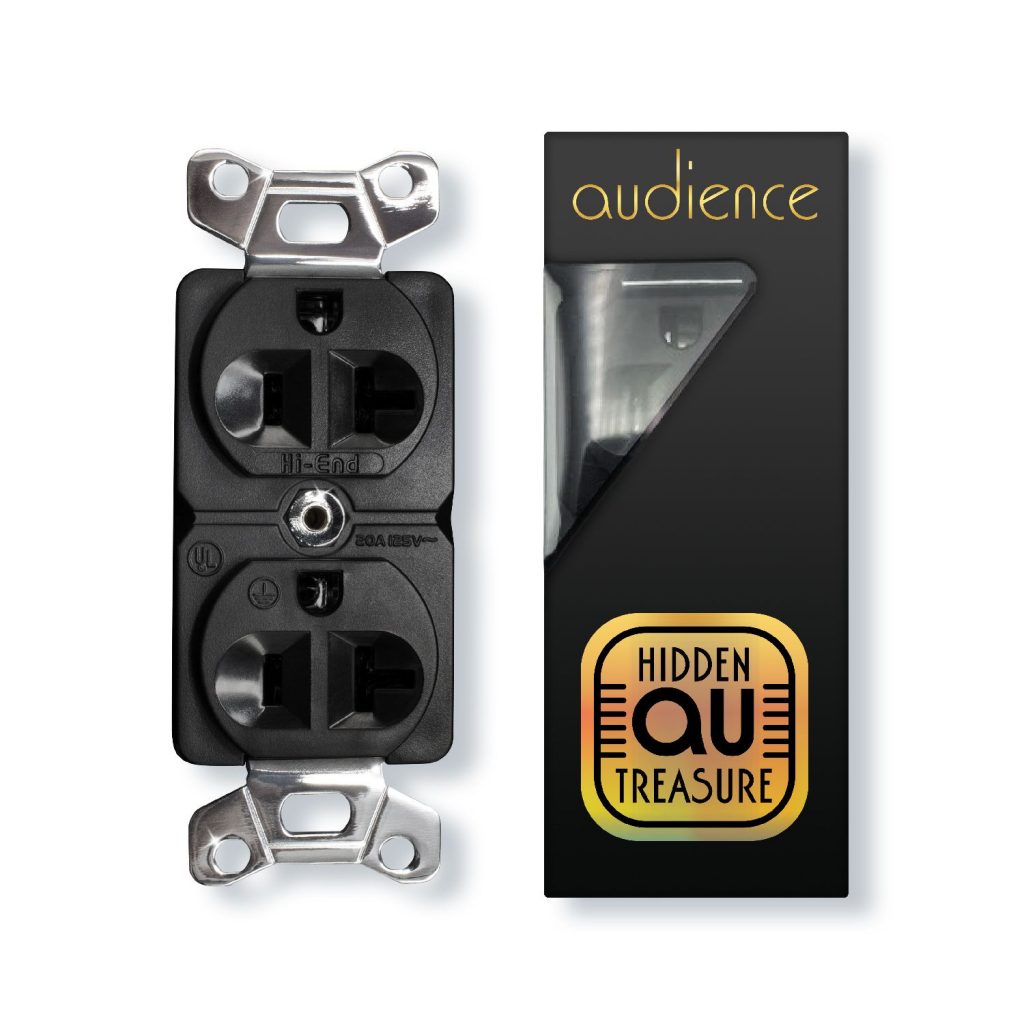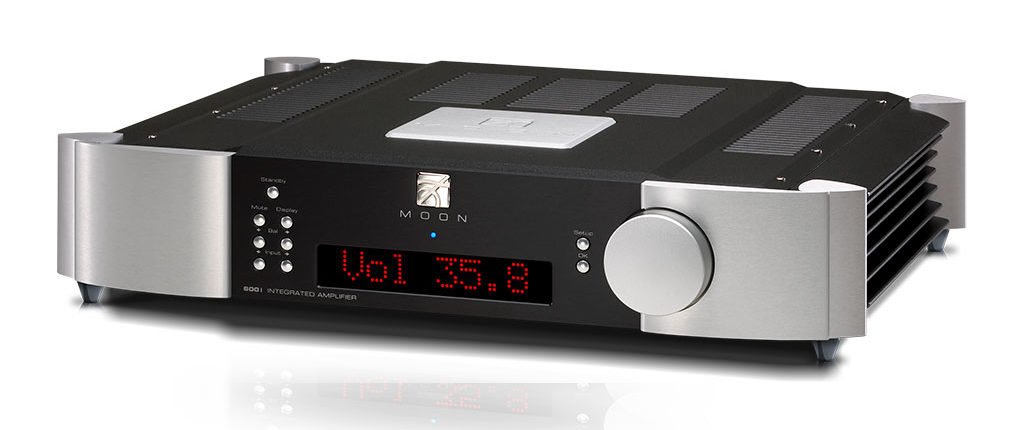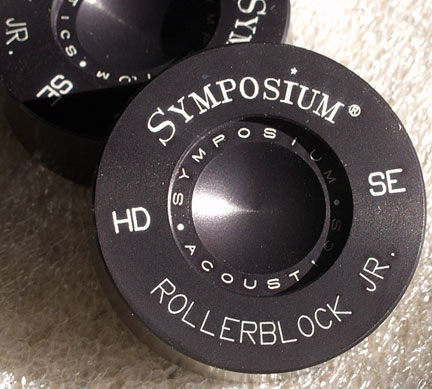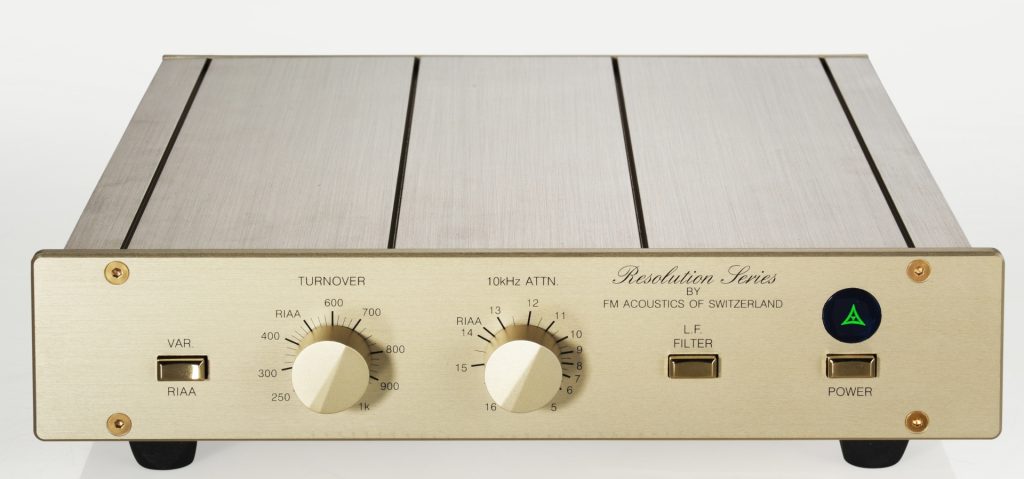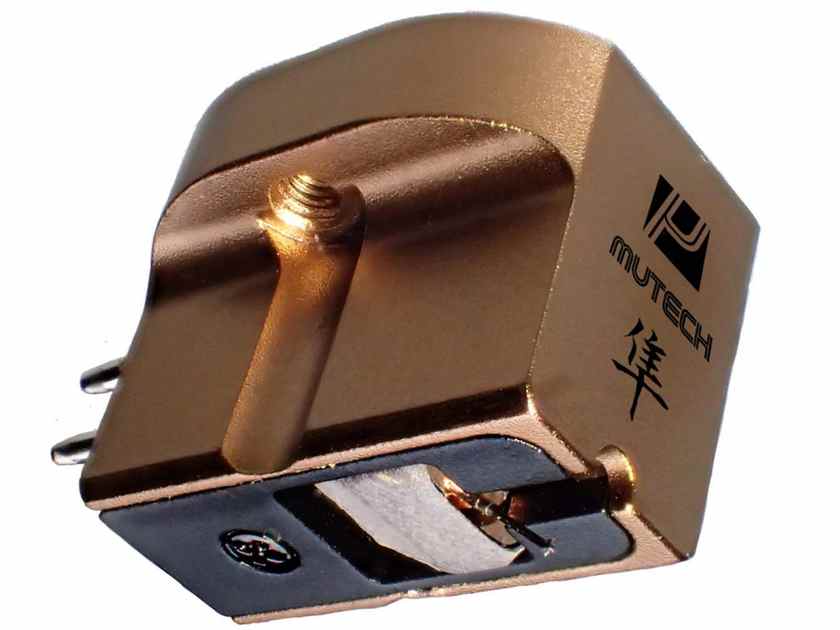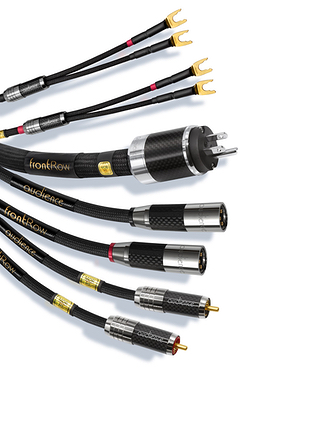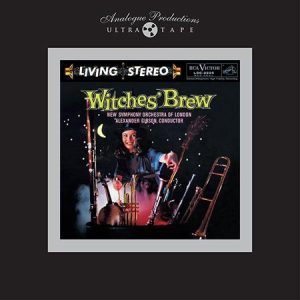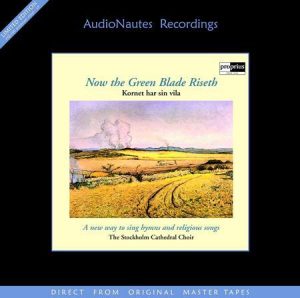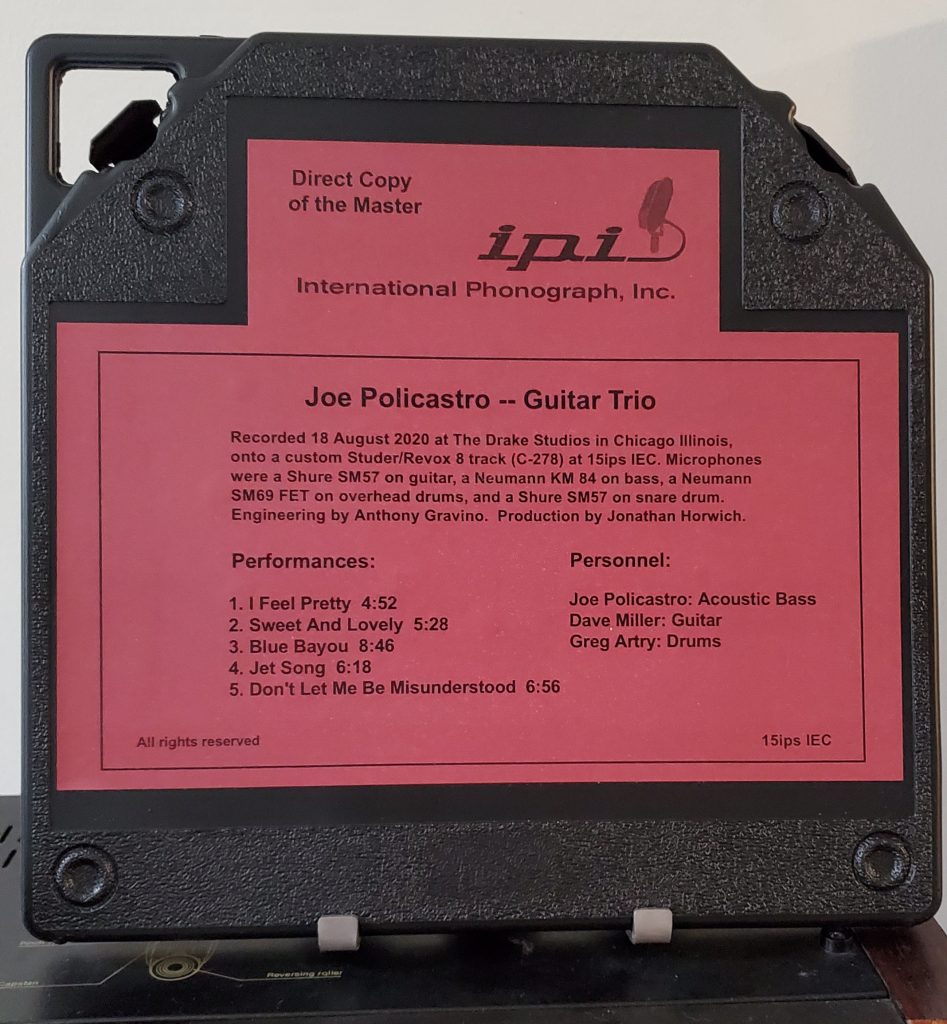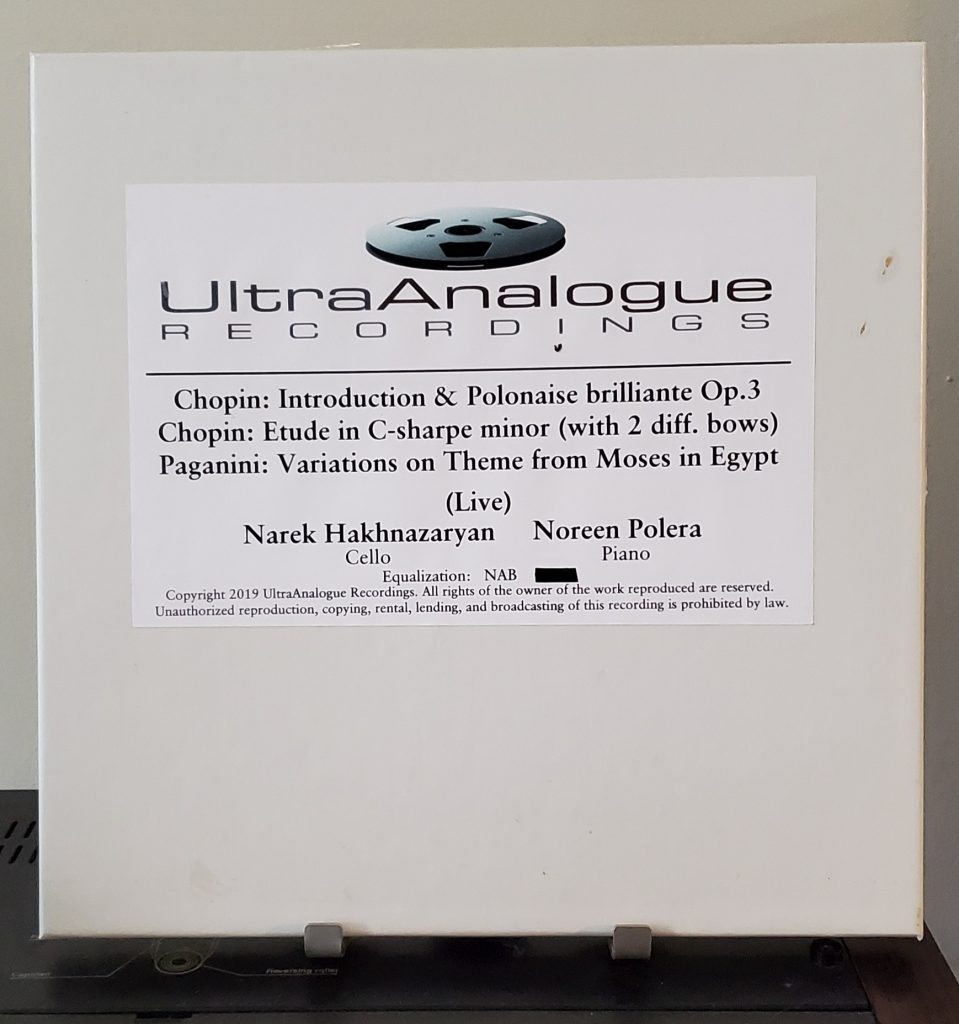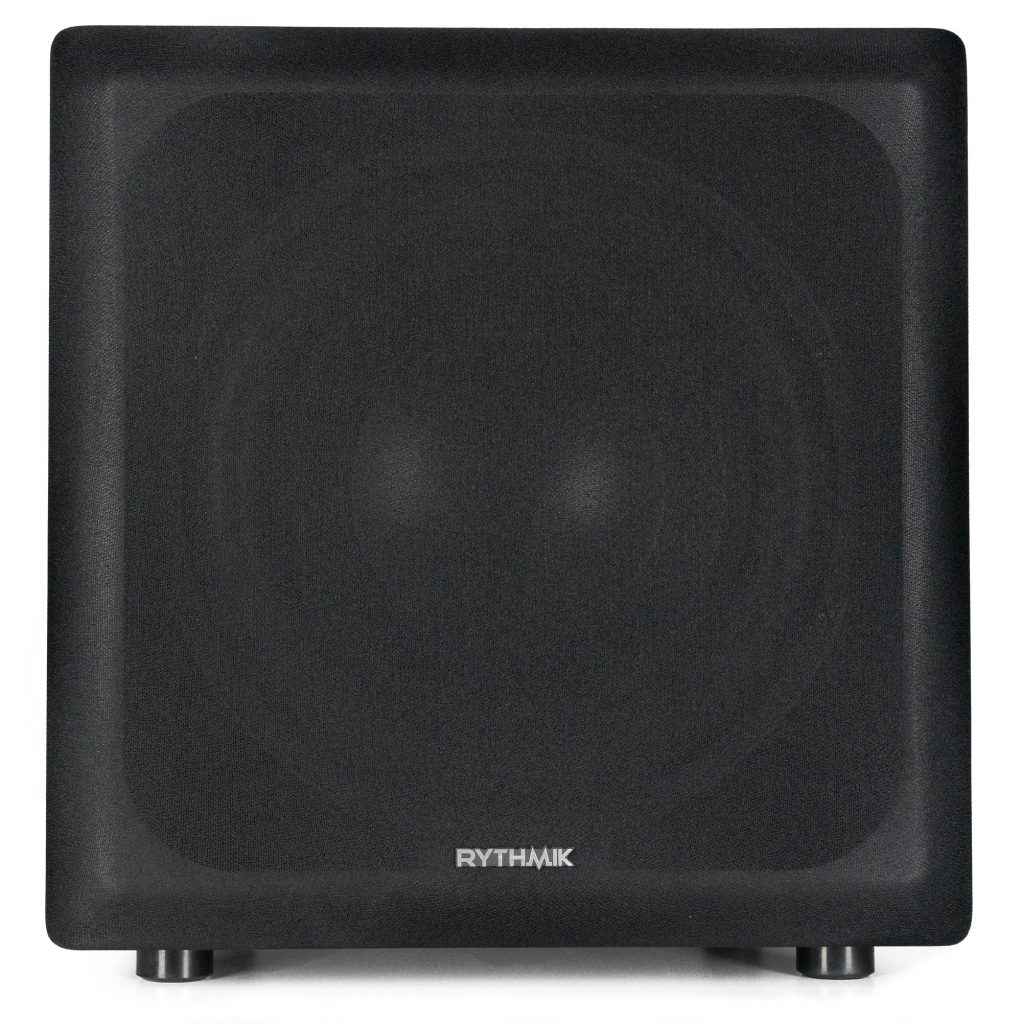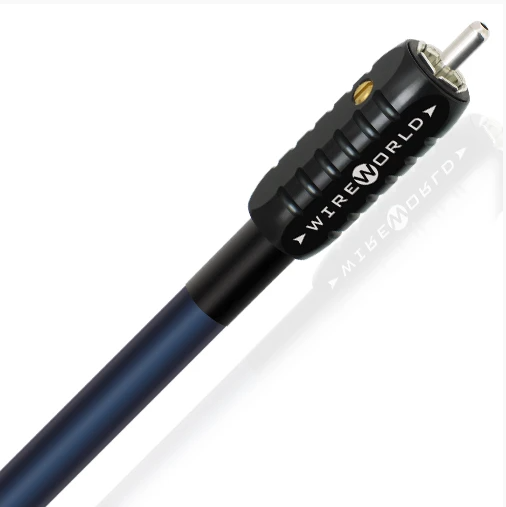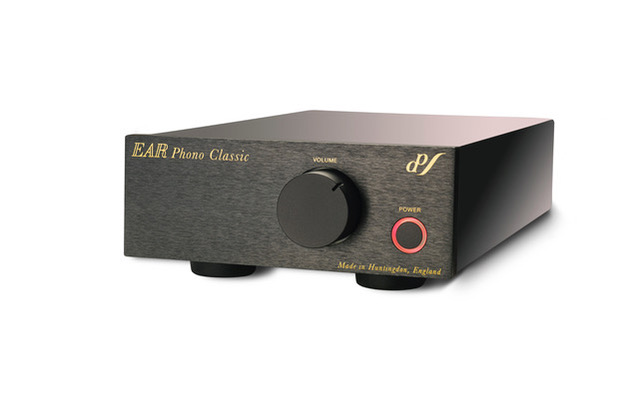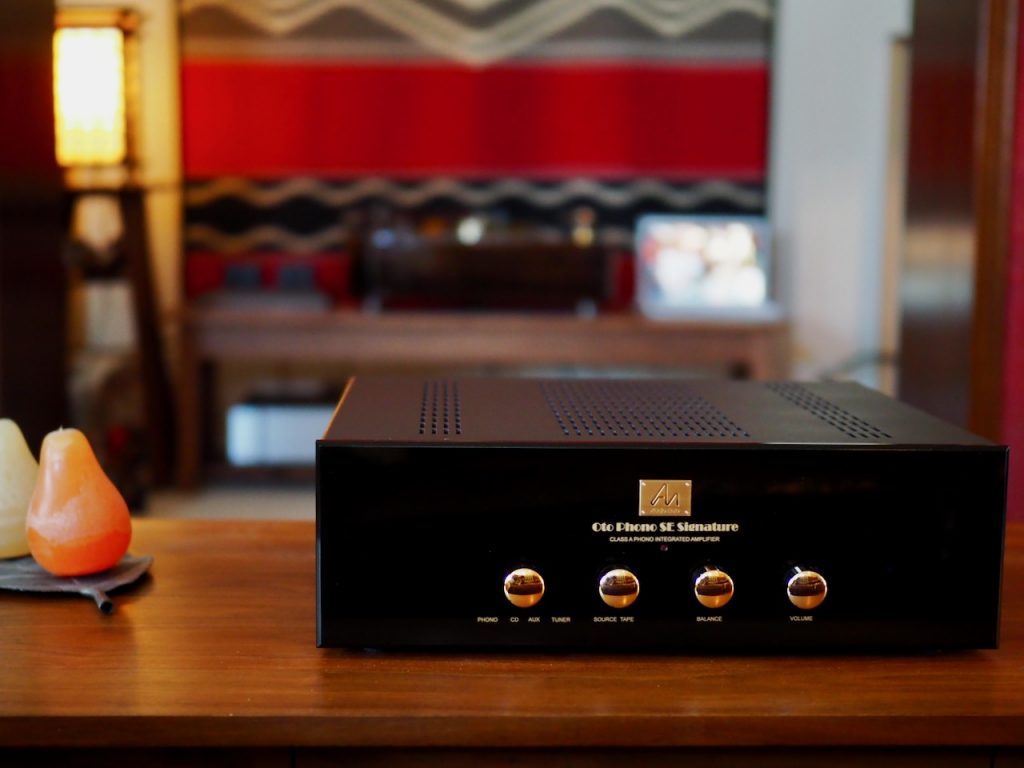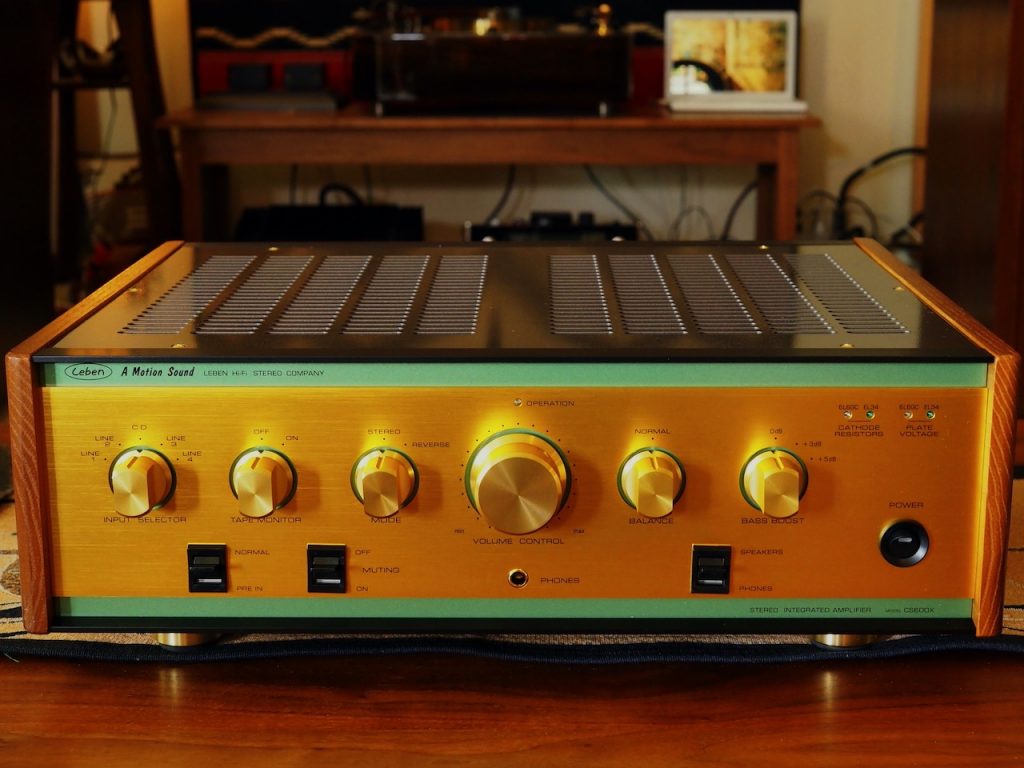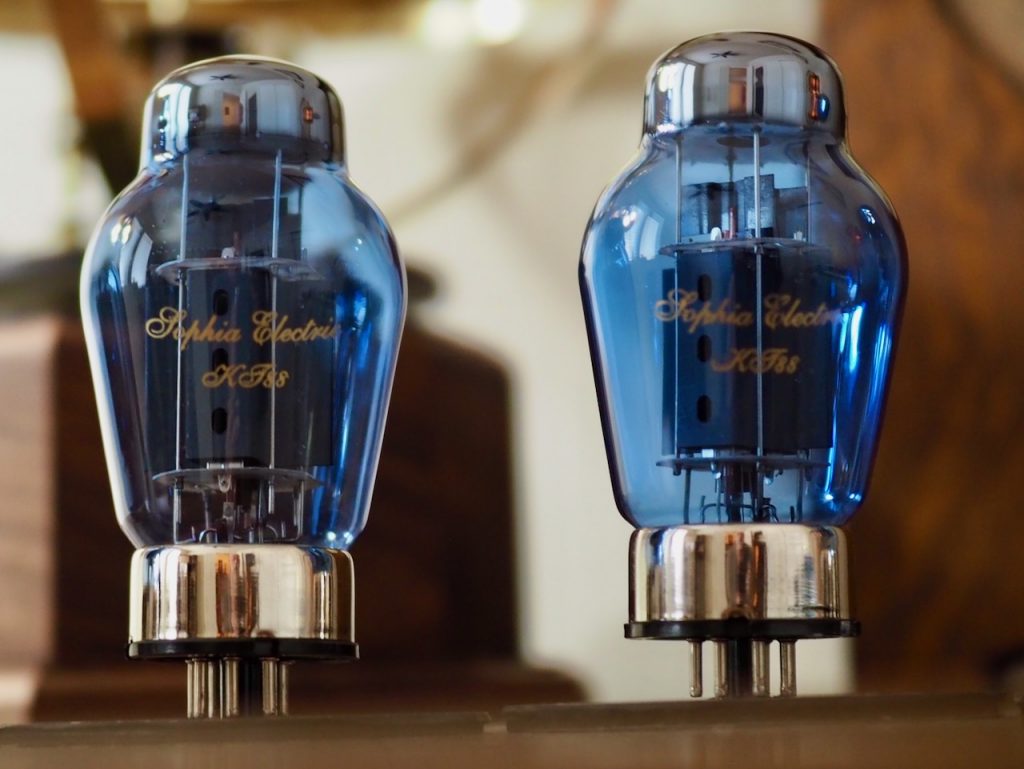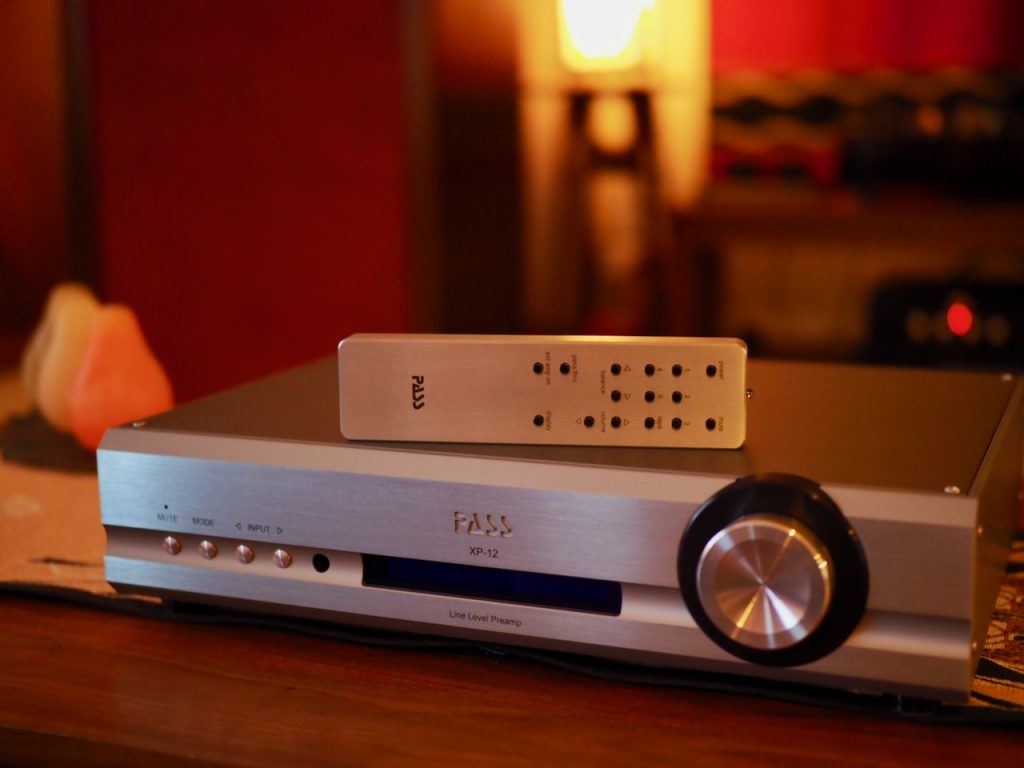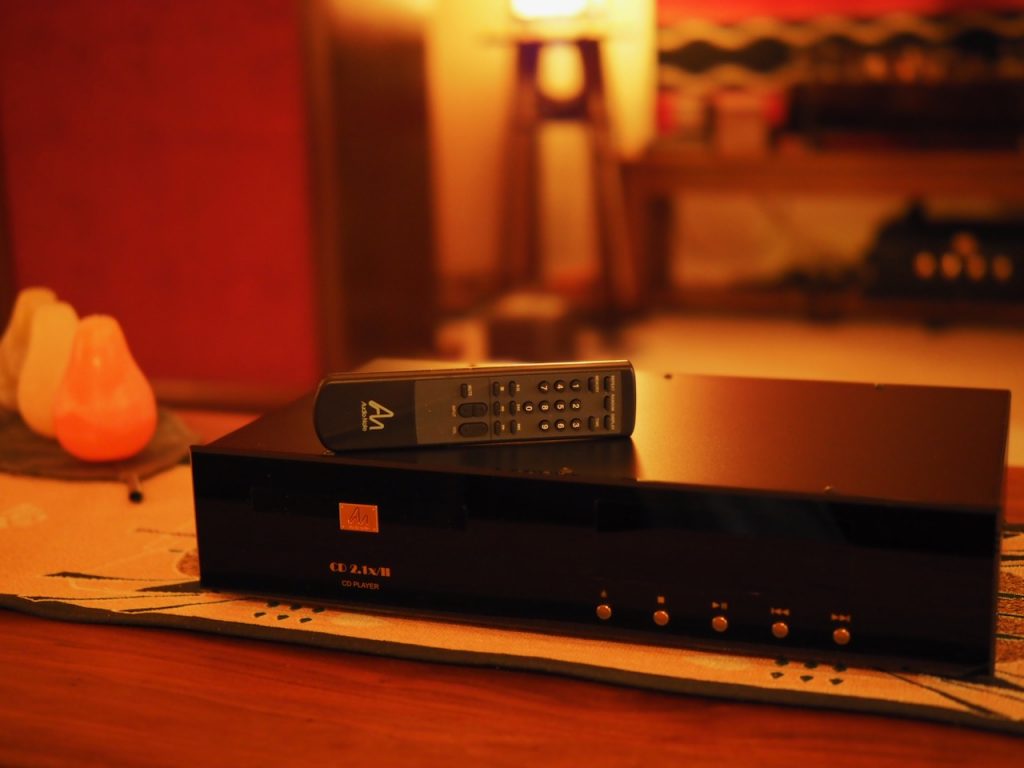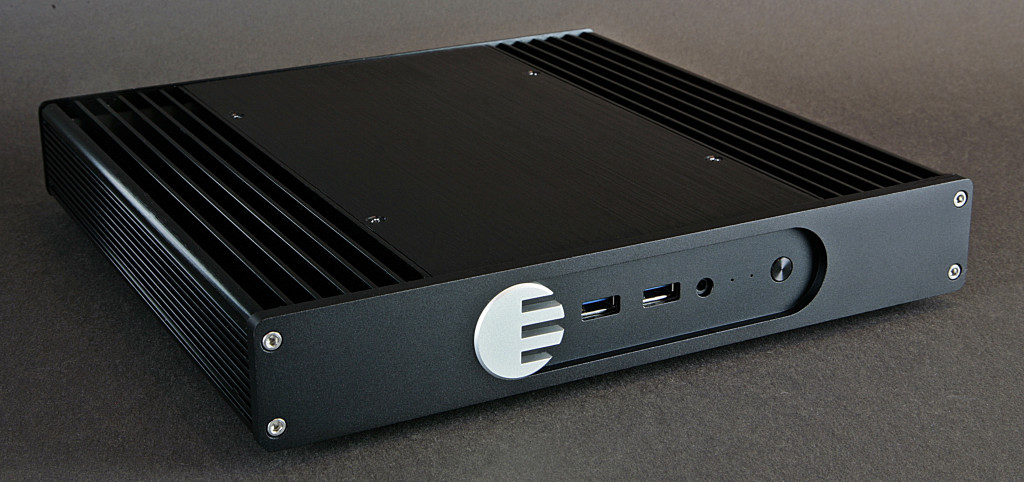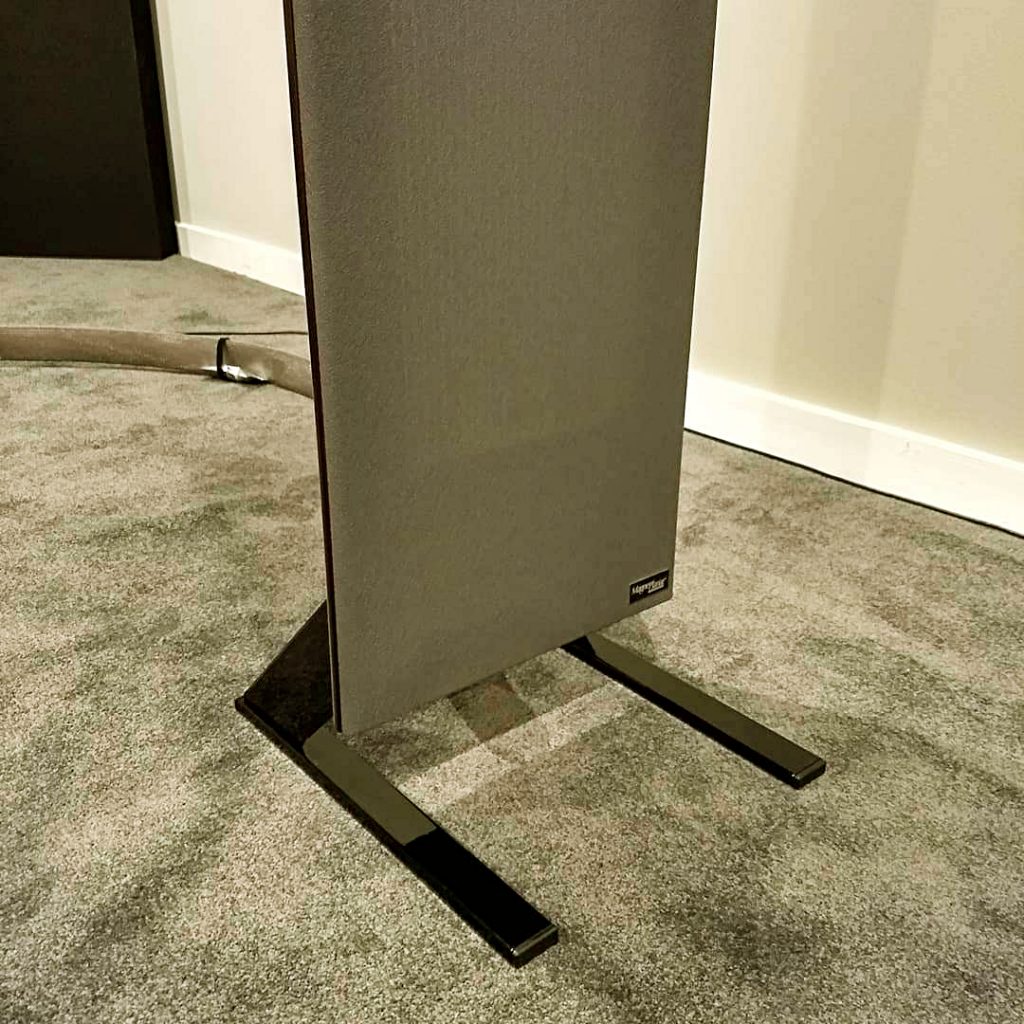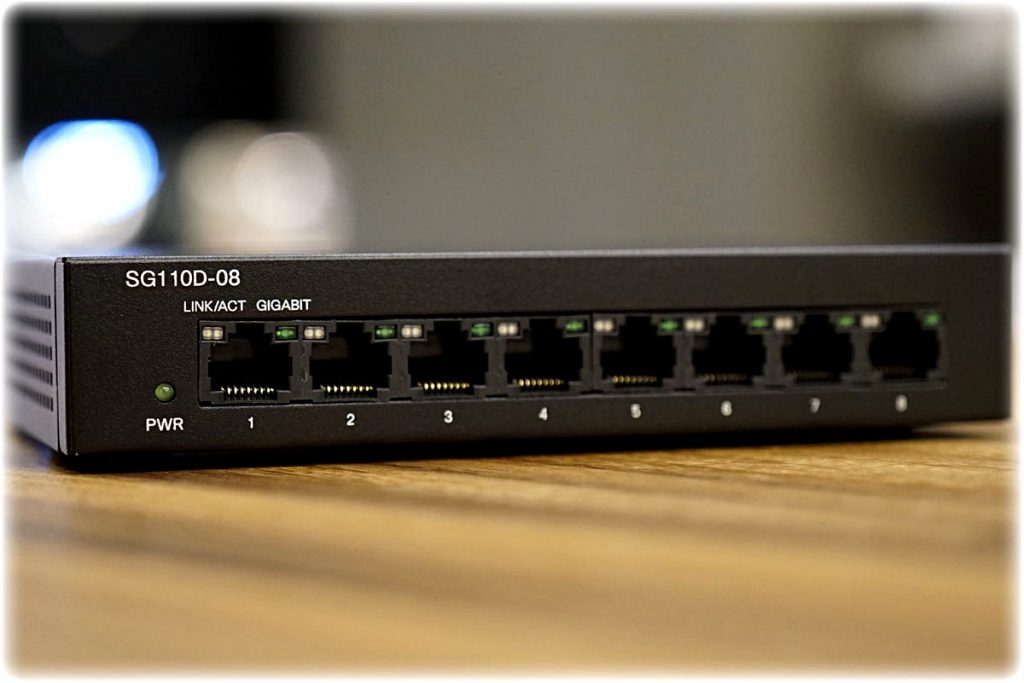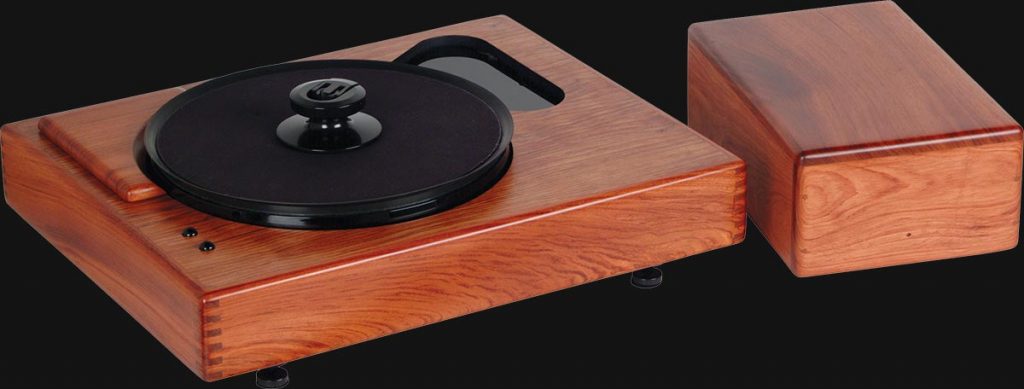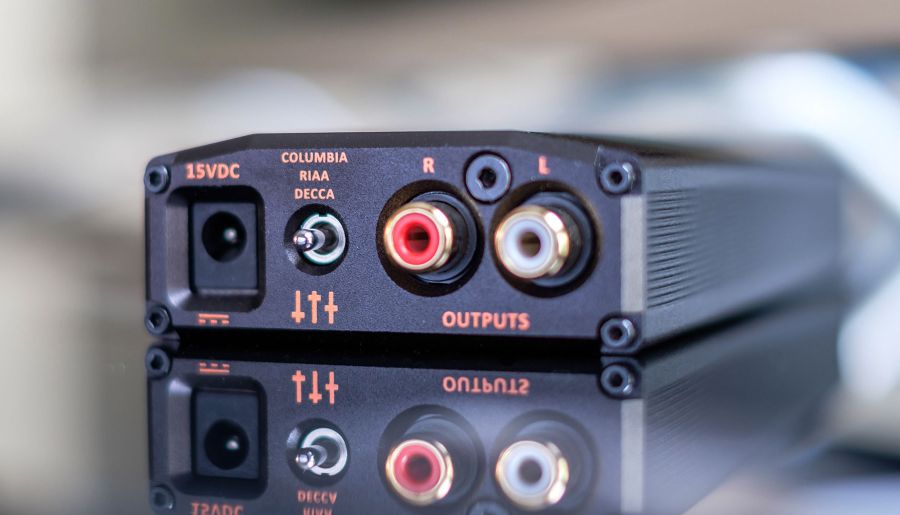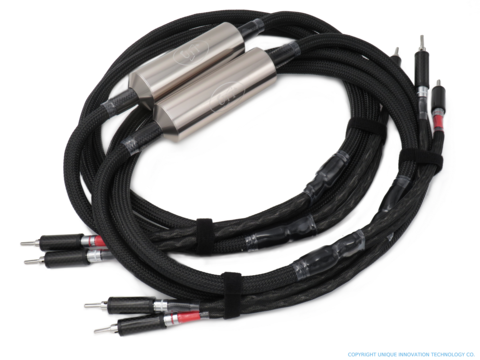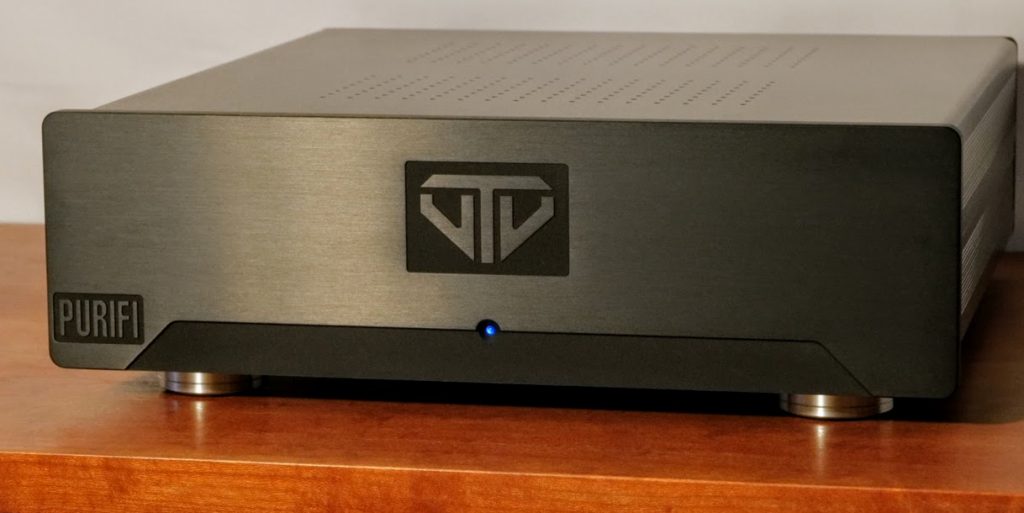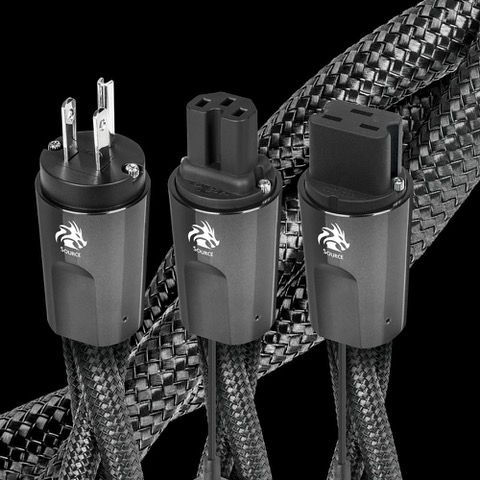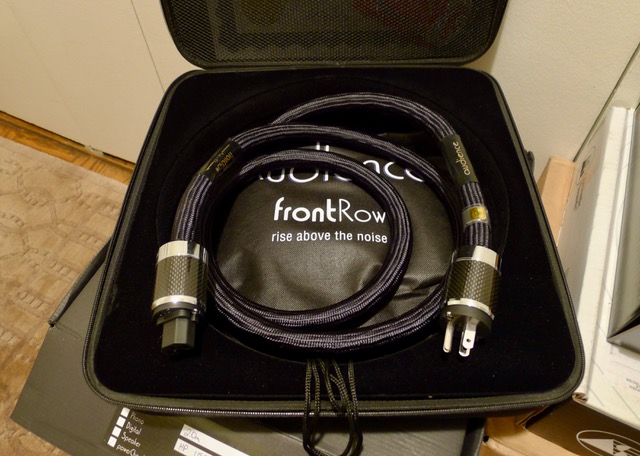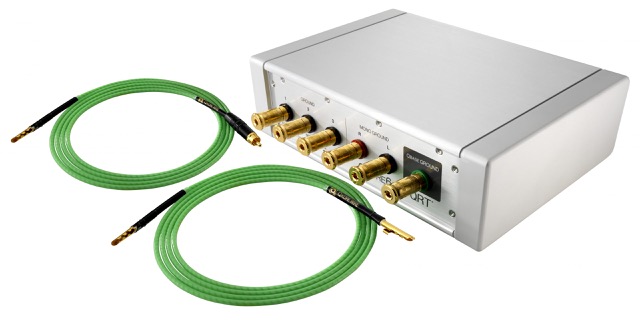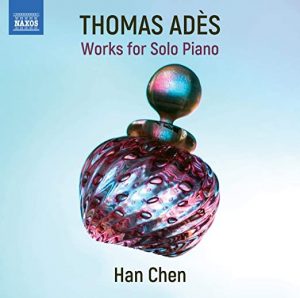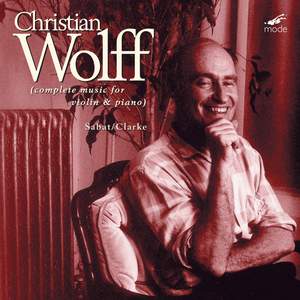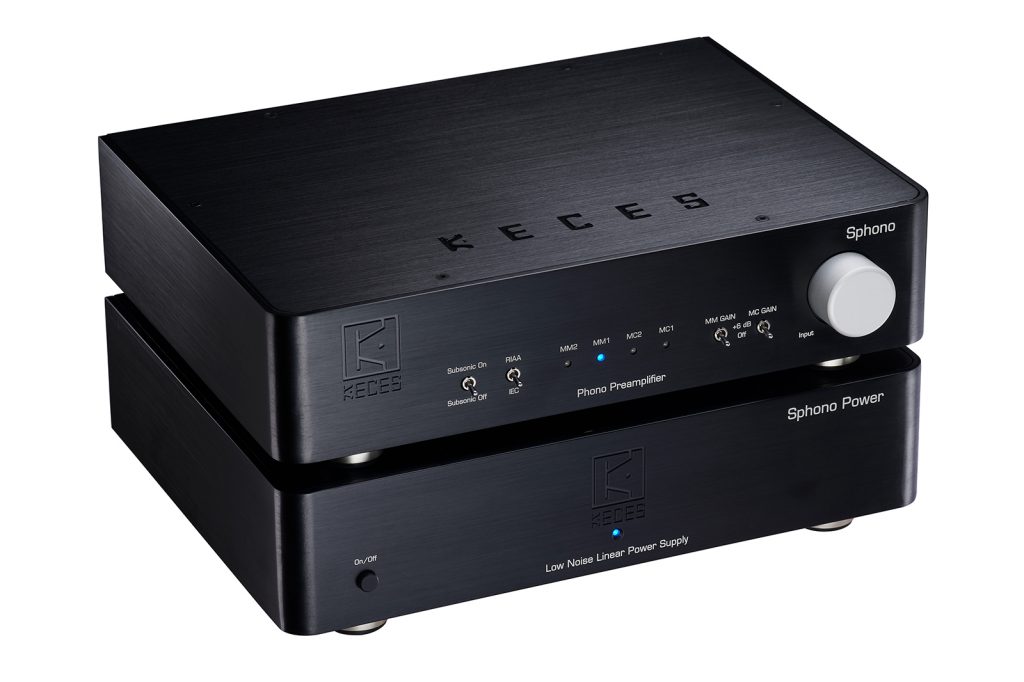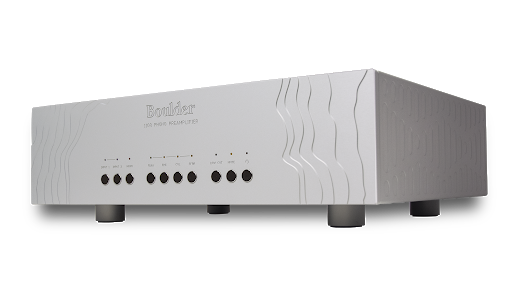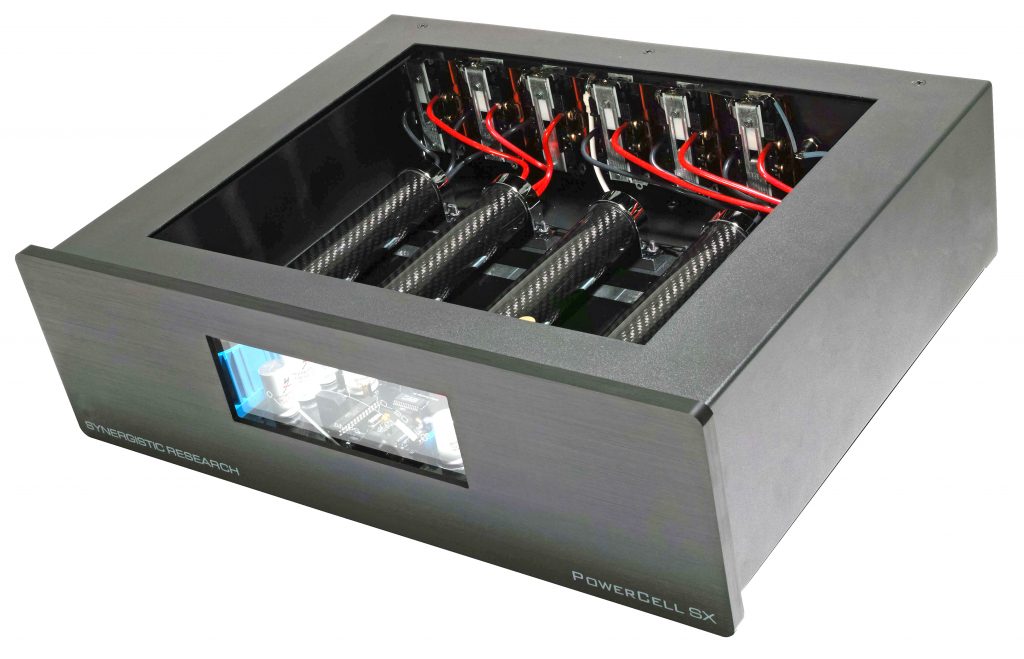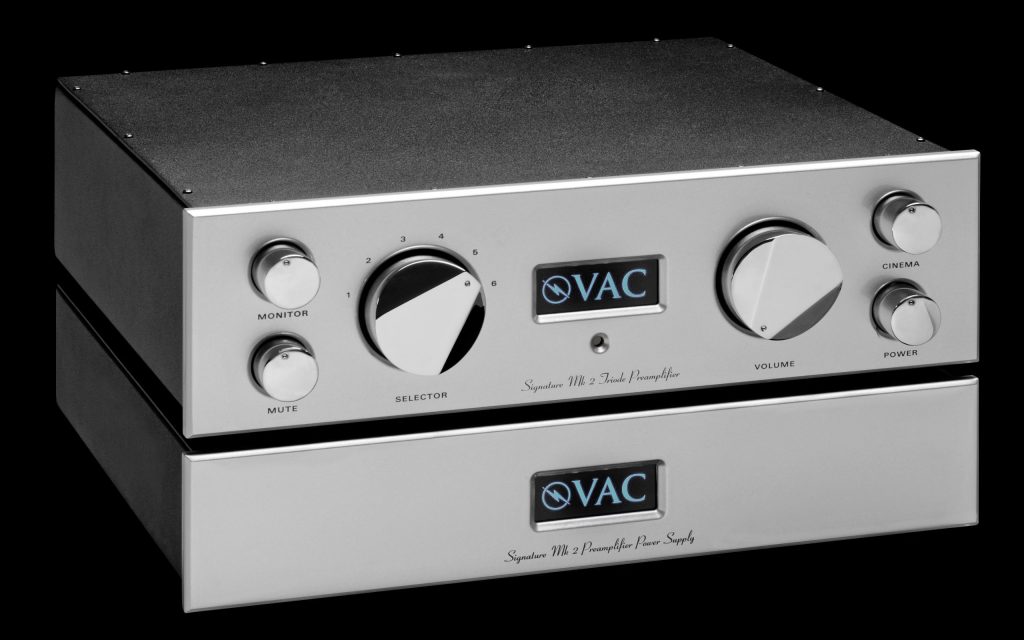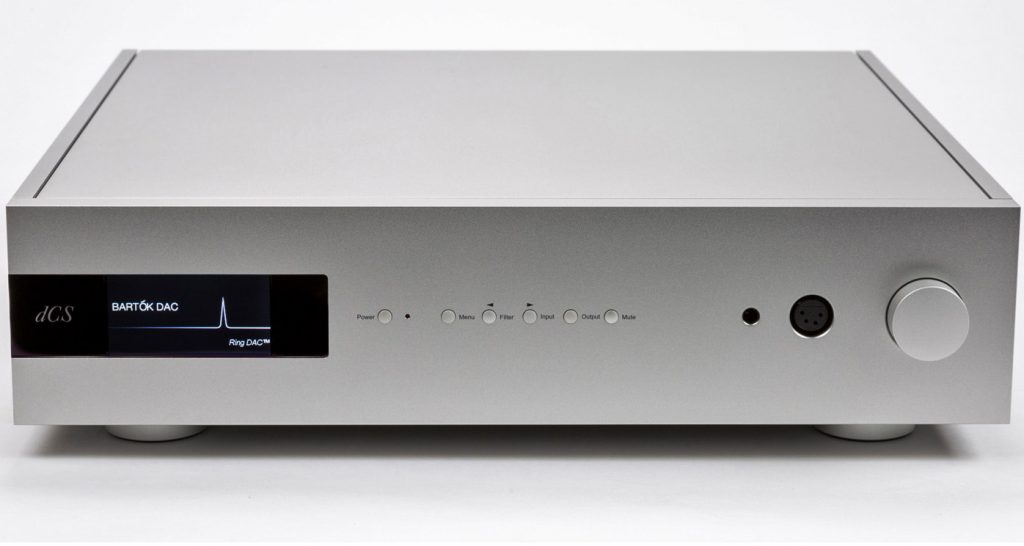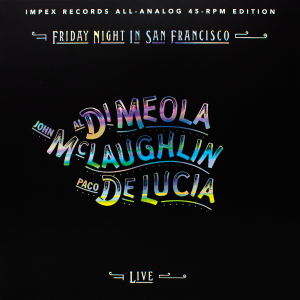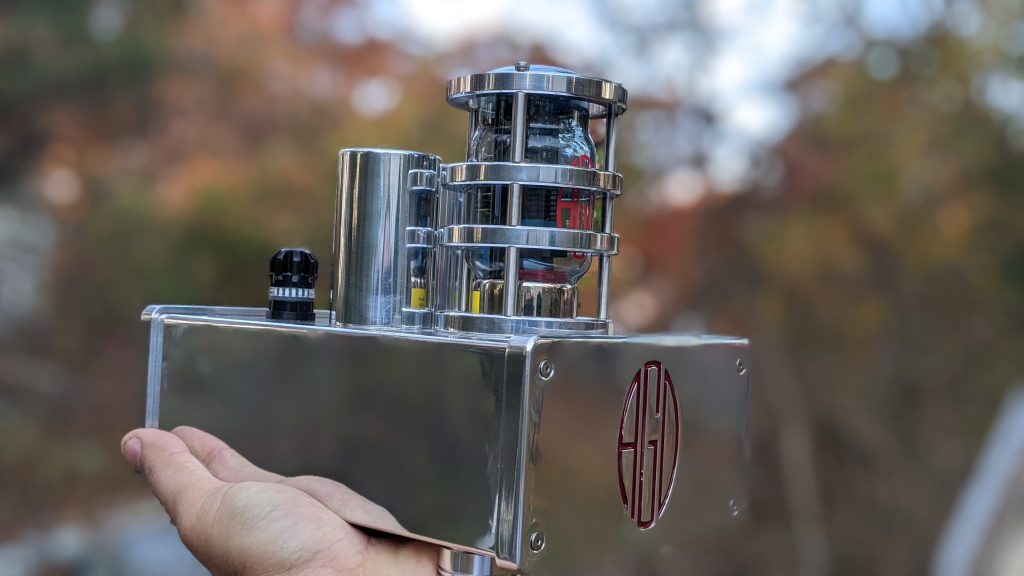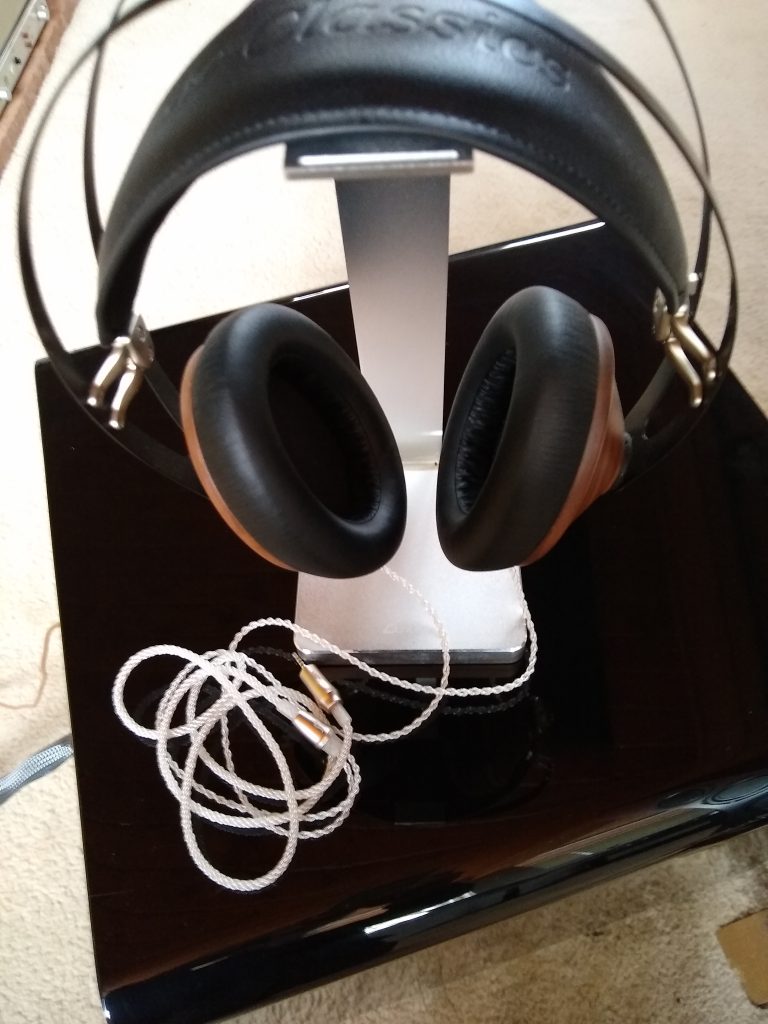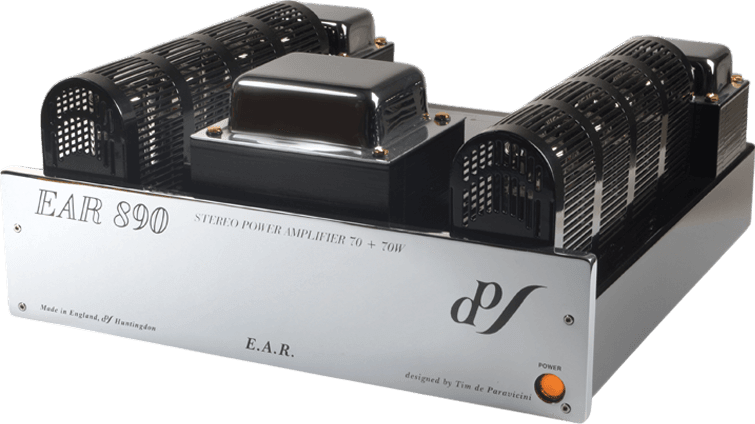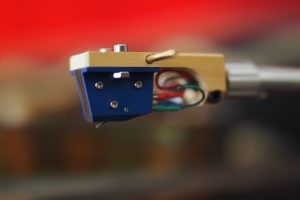Beginning at the end of 2003, PF established its first annual awards for fine audio. The Brutus Award was established for the best that David Robinson and Dave and Carol Clark had heard in their own listening rooms during that year. You can think of it as our equivalent of an "Editors' Choice" award.
The Gizmo Award, on the other hand, was established in memory of our very good audio friend, Harvey "Gizmo" Rosenberg, and is given by David Robinson to the most conspicuous audiomaniac(s) of the year. Only one Gizmo is given per year; some years, no Gizmo is given at all.
The following is an opportunity for our editors and writers to recognize superior merit in the audio arts though their "Writers' Choice Awards." Our writers and reviewers have been given broad leeway to cite excellence in fine audio wherever they find it: products, people, recordings, events, groups, etc., so that our readers can be better informed.
It is our hope that you will find the PF Writers' Choice Awards to be helpful to you in your audio journey.
All the best,
Positive Feedback
John Acton
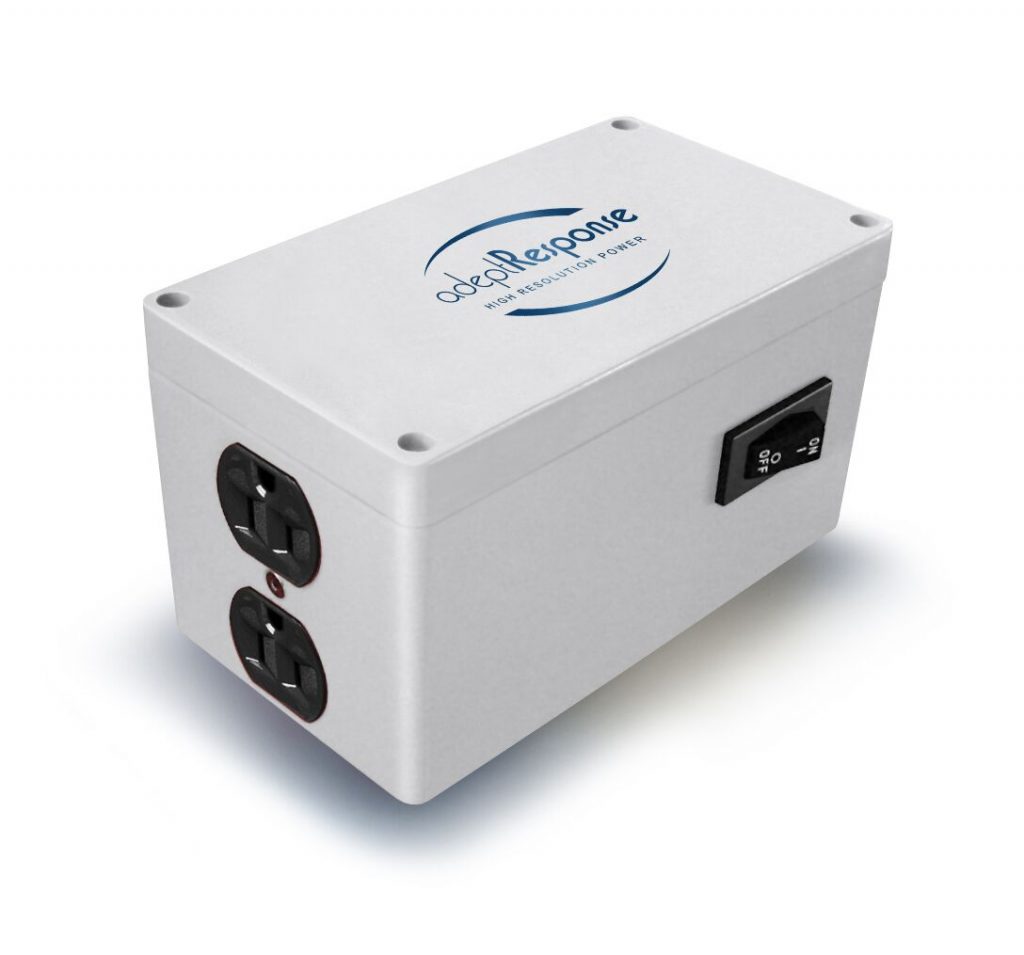
Audience aR2p-T4 Power Conditioner $2400
Despite being Audience's smallest power conditioner, the aR2p-T4 incorporates all of Audience's most advanced technologies, including Aura-TR Teflon capacitors, Hidden Treasure outlets, premium Au24 SX-OCC internal cabling, S-filter, and Ultra High Voltage Process (UHVP) treatment. In my system, the aR2p-T4 eradicates radio-frequency interference (RFI) and electromagnetic interference (EMI). As a result, I experience notable increases in clarity and resolution, with related improvements in high-frequency air, soundstage definition, and image layering. The aR2p-T4 does not limit dynamics and even provides surge protection. Having witnessed the aR2p-T4's effects, I find it impossible to live without.
Read more HERE
Audience Hidden Treasure High-Definition AC Outlet $200
Representing Audience's first foray into the highly-competitive after-market AC outlet segment, the Hidden Treasure High-Definition AC (HDAC) duplex outlet benefits from the company's long history of industry-leading innovation. Starting with outlets composed of a high-quality copper core plated with rhodium, Audience employs its proprietary MORRE (Musically Optimized Reduction of Resistive Technologies) and Ultra High Voltage Process (UHVP) technologies to optimize the Hidden Treasure's conductivity, which results in greater preservation of the AC signal's integrity. The sonic results are unequivocal—the Hidden Treasure brings out more detail and nuance, allowing me to hear more deeply into my favorite recordings. Notable increases in transparency wrought by the Hidden Treasure manifest as enhanced treble air and reduced opacity and overhang in the bass. In a hobby so prone to the law of diminishing returns, the Audience Hidden Treasure HDAC outlet evinces sonic improvements on par with component upgrades many multiples of its price.
Read more HERE
Simaudio MOON 600i v2 Integrated Amplifier $9000
Elegantly styled and beautifully constructed, the Simaudio MOON 600i v2 integrated amplifier possesses all the hallmarks of a flagship design. Fully-balanced and completely dual-mono in nature, the 600i v2 incorporates Simaudio's proprietary Lynx technology for the elimination of global feedback, as well as the company's M-eVol2 volume control for very precise volume manipulation (down to 0.1 dB) across 530 steps with no signal degradation. Sonically, the MOON 600i v2 sets new standards in transparency, resolution, and dynamic expression. Spatial recreation is a strong suit, as is the amplifier's expressive midrange. Musically communicative and supremely involving, the 600i v2 is simply the finest integrated amplifier I've experienced.
Symposium Rollerblock Jr. HDSE Footers $375 for a set of three
Comprising a Grade 10 tungston-carbide ball bearing sandwiched between two inverted bases of top-grade 7075 aircraft aluminum, the Symposium Rollerblock Jr. Heavy Duty Special Edition coupling / decoupling footer is designed to reduce component-borne and airborne vibration. Without changing tonality or otherwise introducing any deleterious sonic effects, the Rollberblock Jr. HDSE footer evinces marked increases in clarity and resolution, while effecting a greater sense of ease and musical involvement. Dynamic contrasts are rendered more convincingly, and soundstage width and depth expand into the room. Image density and layering are greatly improved, resulting in greater differentiation of individual instruments within the broader soundscape.
Read more HERE
Myles Astor
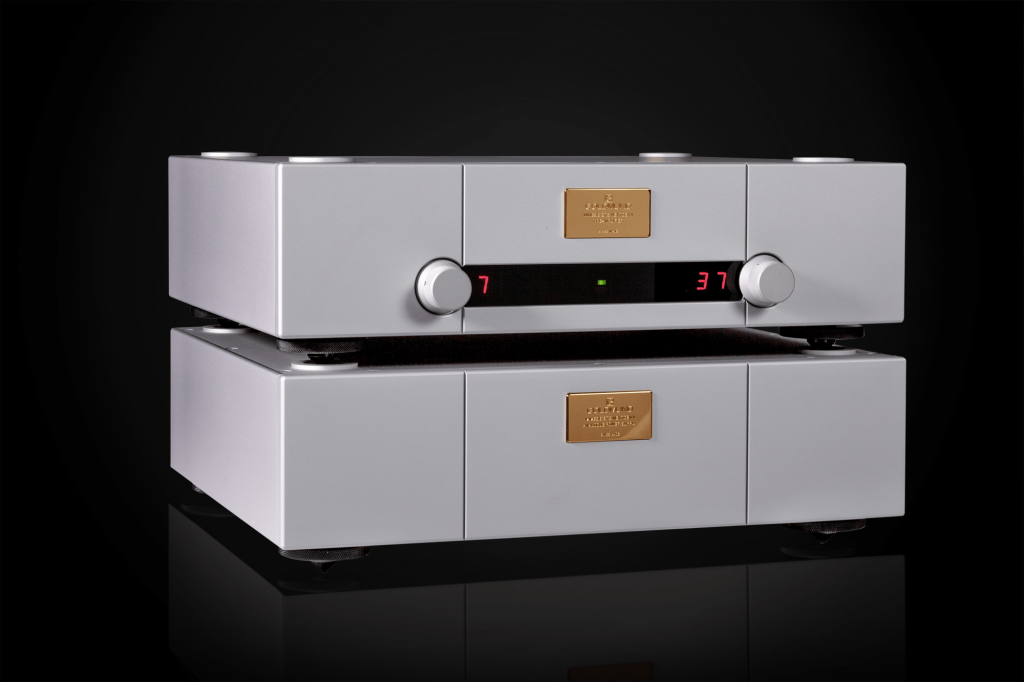
Goldmund Mimesis 37S NextGen preamplifier ($39,975) and Telos 280 amplifier ($19,450)
The latest versions of Goldmund's Telos 280 stereo amplifier and two-piece Mimesis 37S Nextgen preamplifier top this year's product list. Yes, this combo from Switzerland ticks all those relevant audiophile boxes such as vanishingly low noise floor, wide bandwidth, low coloration, superb resolution, wide dynamics, massive soundstage, super clean midrange, etc. More so—and something that I haven't completely digested yet—is the electronics ability to bring out the best in almost all, not just a select few albums and tapes. In the end, however, it's the ability to listen to music all day long without an ounce of listening fatigue that really sets the 280 and 37S apart from the competition. 'Nuff said.
Read more HERE
FM Acoustics 122 Mk. 2 Linearizer Preamplifier $16,750
The next product on my list is also manufactured in Switzerland. Some will undoubtedly read this capsule and mistakenly conclude that I've gone completely over to the dark side. Truth is nothing could be further from the truth. The FM Acoustics is simply satisfying my continued curiosity of all products tube, transistor, and everything in between. And what a fun adventure it's been so far! This compact, zero feedback, Class-A output stage, design from FM Acoustics includes the ability to fine tune record EQ (a requisite for those who play mono records) and cartridge loading. FM Acoustics phono stage proved a near perfect match to the Goldmund Electronic's vanishingly low noise floor, and didn't display any off putting artificiality. Just the music, all the music. In short, the FM Acoustics 122 Mk. 2 Linearizer Preamplifier is extremely neutral, super quiet and resolving without crossing over into hyperdetailed territory. The FM Acoustics phono stage's most impressive qualities include its super defined and dynamic bass (note that it takes roughly five hours for the sound to stabilize after turning off) and oh so natural midrange. Definitely one phono stage to add to the shopping list in this price range.
Mutech Hayabusa moving coil cartridge $4500
This Japanese moving coil cartridge proves one need not break the bank to enjoy one's LPs. The Mutech Hayabusa may, in fact, be many audiophile's ultimate transducer. The heart of this cartridge is a yokeless, ring magnet generator design built by Eiji Kanda (think Transfiguration Orpheus) with a healthy 0.45 mV output. The Mutech Hayabusa definitely has more meat on the bones and dynamics than the later Transfiguration Proteus Series 1, and combined with the Audience frontRow cables has a remarkable ability to generate palpable, stable imagery. The midrange is very uncolored and in combination with the Goldmund electronics really captures the minutest differences between singers. The Mutech errs ever so slightly to the omission side and doesn't quite match the best cartridges when it comes to resolution and ultimate bass control. Yet everything about this moving coil cartridge is just eminently balanced and bonds with the listener.
Audience frontRow Interconnect and speaker cables and power cords
Interconnect, RCA $3300/meter plus $375 each half meter after; Speaker cables: $4000/meter plus $500 each half meter after; Standard 10 AWG powerChord: $6700/6 ft plus $260 each foot after; MP (medium power 13 AWG powerChord: $6200/6 ft plus $240 each foot after.
I'm at a loss to understand why Audience's cables don't garner more attention. I've had all three levels of their cables in house and each level was an excellent performer. Audience's latest, top-of-the-line, frontRow cable line takes the sound of their two lower priced lines—namely musical ease, three-dimensionality and soundstaging—and markedly improves on it. The latest Audience (the interconnects and speaker cables are very lightweight and flexible) frontRow cables are even more transparent, extended and dynamic and their ability to focus images is unmatched. Like the best conductors,
Audience's frontRow cables are seen and not heard. And they don't cost an arm and a leg!
Music
2020 was, despite the pandemic, a bountiful year for audiophile recordings on both LP and tape. The stacks of tape boxes and LPs dotting my living room (truly a living room during the Covid crisis) bears testimony to my music purchases. So here are my top new and reissued analog music selections from this past year.
Recording of the Year
Classical, 15 ips reel-to-reel tape: Witches Brew, Alexander Gibson (Conductor) and New Symphony Orchestra of London, Kenneth Wilkinson (Engineer), Recorded at Kingsway Hall, London, recording date 1957, Analogue Productions/RCA LSC-2225, RRAP 0023.
Breaking news! Witches Brew captures this year's best classical reel-to-reel tape reissue and the best recording categories! Not too shabby for a 63 year old stereo recording.
Witches Brew headlines Analogue Productions latest series (the third to be exact and roughly 30 recordings) of 15 ips reel-to-reel tape releases. This grey in the hair stereo recording's roots trace back to RCA (US) and Decca Records (UK) joint commercial recording venture where Decca retained the rights to the tapes and RCA obtained rights to release these great recordings for 10 years.
Recordings as ghoulish and great sounding as this tape come by once in a lifetime. Sid Marks (then writing for TAS) introduced me to this recording back in the mid-80s, and cuts such as Malcolm Arnold's wowie zowie Overture to Tam O'Shanter or Saint-Saens' Death summoning the dead with his fiddle Danse Macabre have been a long time reference staples ever since! This 15 ips tape simply confirms the brilliance of Kenneth Wilkinson and further opens up this recordings' dynamic window, bass clarity and dynamics. String tone is ever-so-sweet without being syrupy. (Check out the harp playing at the end of Hansel and Gretel!) Don't worry if you don't own a reel-to-reel tape deck as Witches Brew is also available on LP from Analogue Productions! Maybe it's time for Analogue Productions to reissue Witches Brew (like Classic Records did) as a 45 rpm Clarity box set? The mind boggles at the mere thought!
Reissued Recordings
Jazz, 15 ips reel-to-reel tape: Patricia Barber: Modern Cool, Michael Friedman (Executive Producer), Jim Anderson (Engineer), reissue by Jonathan Horwich, Patricia BarberMusicLLC, original release 1998.
Patricia Barber's 1998 release Modern Cool is now available on 15 ips reel-to-reel tape. Yes, Modern Cool was originally recorded using a Sony 3348 32-track 16/48 digital recorder and directly mixed down by Jim Anderson to 2-track, ½-inch tape. No matter—and like Barber's five earlier tape reissues—Modern Cool just really struts its stuff on tape. These dupes were made from a 24/192 master by Jonathan Horwich for Premonition Records. Modern Cool features mostly original Barber compositions with the addition of Dave Douglas on trumpet to her group. (Check out his playing on "Love, Put On Your Faces" or "Constantinople.") Modern Cool has a huge soundstage heard to best effect on "Love, Put on Your Faces" with the Choral Thunder Vocal Choir bringing a new dimension both musically and sonically to this Barber recording. "Constantinople" really shows off the recording's low end snap and extension. And of course Barber ends Modern Cool with her unique, utterly feminine rendition arrangement of The Doors "Light My Fire." Don't let this recording's digital origin dissuade you from adding this tape to your collection!
Classical recording, LP: Co-winners, Now the Green Blade Riseth Kornet har sin vila, Gustaf Sjokvist/Bengt Berg (Conductors), Bert Alving (Engineer), Fabio Camorani (Reissue Producer), Remastering engineer: Scott Hull, recorded March 18, 20 and 21, 1981, Audionautes/Proprius 7853.
Beethoven: Violin Sonata No. 8, Op. 38, No. 3; Brahms: Violin Sonata No. 1, Op. 78, Henryk Szerying (violin) and Artur Rubinstein (pianist), Max Wilcox (Producer) and Anthony Salvatore (Engineer), Remastering engineer: Ryan Smith, Analogue Productions/RCA LSC-2620, originally released in 1962.
Picking a clear cut winner in the classical reissue category ultimately proved impossible (especially with Analogue Production's outstanding RCA Living Stereo classical recording series). So this year's award for best classical reissue is shared by Audionautes and Analogue Productions.
I've been buying Bertil Alving's legendary Proprius recordings since the mid-80s (thanks at that time to the Swedish Music Service) but apparently this gem and rarity eluded my grasp. Now the Green Blade Riseth Kornet har sin vila features the Stockholm Cathedral youth choir performing choral and religious music scored for a battery of instruments including guitar, organ, triangle, recorder, bass, and flute. This reissue captures that huge soundstage, separation of voices and healthy abundance of cathedral space characteristic of those classic Bertil Alving Proprius recordings. Highest recommendation!
The Szerying/Rubinstein collaboration isn't an LP that sits atop most RCA Living Stereo collector's lists, but perhaps it should. As noted in the Penguin Stereo Record Guide, "Szerying and Rubinstein are at their finest in this triptych of Brahms sonatas" and I doubt few will disagree. Neither does this recording display that prototypical exaggerated (sometimes even to the point of distortion) Rubinstein "sound" (they are buying the record to hear me and I should be front and center). Of the two pieces, the Brahms on the second side (also known as the Rain Sonata) with its 16th notes emulating the sound of raindrops sees the most play time. Salvatore captures an almost perfect perspective on both players and the sound of both instruments—particularly Szerying's violin—are exemplary. A perfect LP for relaxing on non-football Sunday afternoons!
Jazz recording, LP: Grant Green, Born to Be Blue, Blue Note/Tone Poet BST 84432, Alfred Lion (Producer), Rudy van Gelder (engineer), Remastering engineer: Kevin Gray, Cohearent Audio, recorded 1961-62.
There was no shortage of choices in this category either led this year by the many new releases from the Blue Note vaults by Joe Harley and Tone Poet. Born to Be Blue was one of the albums Green recorded with Sonny Clark in 1961-62 that wasn't released until after his death. Sometimes it's great while listening to Grant Green to genuflect upon what stands out the most about his playing. The answer on Born to Be Blue is Green's trademark clean, clear tone and rhythmic drive that is just punctuated by all the little technical things he does and the legatos, staccatos, quarter notes, accents, etc. Another thing that always amazes me about Green is the great musicians with which he surrounded himself. Green is accompanied on Born to Be Blue with legendary tenor sax player Ike Quebec, pianist Sonny Clark, bassist Sam Jones and drummer Louis Hayes doing a number of jazz standards culled from the 1920s thru the 1950s. Sadly Green died way before his time.
Rock recording, LP: Jethro Tull: Aqualung, Analogue Productions UHQR 0003-45, Ian Anderson and Terry Ellis (Producers), John Burns (Engineer), Remastering engineer: Bernie Grundman,
I really didn't know what to expect when ordering this album. My original copy of Tull's best selling fourth album Aqualung disappeared many years ago and was never replaced. But I don't remember Aqualung being a particularly good sounding recording; in fact, I remember the album being on the bright side.
Enter Chad Kassem and Analogue Productions' second UHQR release. This 45 rpm Aqualung UHQR (hand pressed on the manual Finebilt press, pressed with Clarity vinyl without impurities and with a flat edge profile) was originally remastered by Bernie Grundman (apparently this release was recut many times until Michael Hobson/Classic Records thought they got it right) for Classic Records; Analogue Productions obtained the metal parts in their purchase of Classic Records and used them for this UHQR release.
Well surprise, surprise. Yes, the UHQR Aqualung is a little dry sounding. But there's nothing unlistenable here. In fact, there's an abundance of low level information, a huge soundstage and most of all fabulous music (Jethro Tull's Benefit was in the interest of complete transparency one of the first three LPs I ever bought as a Junior in HS and I quickly became a Tull fan!). There's simply not a throw away song here starting with the riffs of the title track "Aqualung" to the classic flute opening of "Cross-Eyed Mary" to the timeless "Wond'ring Aloud" to one of Tull's perhaps most well-known song "Locomotive Breath." Get this UHQR before it goes out-of-print! You won't be sorry!
New Recordings
Jazz, 15 ips reel-to-reel tape: Joe Policastro: Guitar Trio, Jonathan Horwich (Producer), Anthony Gravino (Engineer), International Phonograph Inc., Direct copy (2nd generation), IEC EQ.
Guitar music isn't, no matter what Kanye West proclaims, dead ("Guitars are shit instruments, there's not a sound you can make with a guitar that you can't make in a FL studio") and this recording from International Phonograph bears testament to why. Here Dave Miller on his classic Gibson ES-335 semi-hollow bodied guitar demonstrates his guitar virtuosity especially when it comes to how to make the instrument sound bigger. Guitar Trio contains a touch of some familiar jazz standards including "I Feel Pretty" and "Jet" from West Side Story, pop tunes such as Roy Orbison's "Blue Bayou," or the widely covered Benjamin, Ott and Marcus tune "Don't Let Me Be Misunderstand." All performed with a modern twist. And this recording is a sonic knockout just to complete the story. Drums and bass are incredibly solid, detailed and resonant and the tone of the guitar is mouth wateringly realistic. Another great tape release from International Phonograph!
Classical, 15 ips, reel-to-reel tape: Chopin: Introduction & Polonaise brilliante, Op. 3; Chopin: Etude in C-sharpe minor (with 2 different bows); Paganini: Variations on Theme from Moses in Egypt, Narek Hakhnazaryan (cello) and Noreen Polera (piano), UltraAnalogue Recordings, NAB EQ (also available as IEC).
UltraAnalogue is an audiophile label based out of Toronto, Canada specializing in recording chamber music using custom tube electronics and in analog for the ultimate in sound. Their new and best live recording to date begins with one of Chopin's earliest works Introduction and Polonaise brilliante, jumps ahead five year to the Etude and concludes with Paganini's stirring and emotional Variations on a Theme from Moses in Egypt. Noreen Polera, renowned for her piano-cello repertory performs on piano and Narek Hakhnazaryan, a student of Mstislav Rostropovich and winner of the gold medal at the 2011 XIV Int. Tchaikovsky Competition, plays cello on this recording. The second piece Etude in C-sharpe minor features Hakhnazaryan performing this piece using two different bows for comparison. My vote went to bow number 2 that was richer and more romantic than bow number that sounded more detailed but thinner. Just like comparing cartridges.
Sampler recording, 15 ips, reel-to-reel tape: Audiophile Analog Collection, vol. #2, 2XHD Fusion, Andre Perry (Producer), Rene Laflamme (Mastering engineer) and Rene Laflamme, Jean De La Durantaye and Jeff Wolpert (Engineers), NAB EQ (also available as IEC EQ).
Put this one down as a guilty pleasure. Mastering/Recording Engineer Rene Laflamme assembled a, "selection of my best recordings of the past 20 years. Selected for emotion, and it is also challenging for the Hi-Fi system, with tracks that extend below 25 Hz." I'll second that. The highlight of the Audiophile Analog Collection, vol. #2 tape is track three "Seven Last Words of Christ" featuring soprano Monique Page and Regis Rosseau on organ. Word of warning to the wise, lower your volume control before playing this track. The Casavant organ with low frequencies extending below 20 Hz is the world's fourth most powerful organ, and this track will test the mettle of every audio system. Rene LaFlamme should also be complimented on his ability to maintain the proper perspective between the singer and organ eg. the size of singer isn't overblown relative to the organ. Some of the other selections here include a two percussion tracks, a recording of an octobass and bass and the duo of Aaron Davis and David Piltch who backed Holly Cole on two of her hit albums. This tape (or LP) belongs in every tapehead's library.
Gary Beard
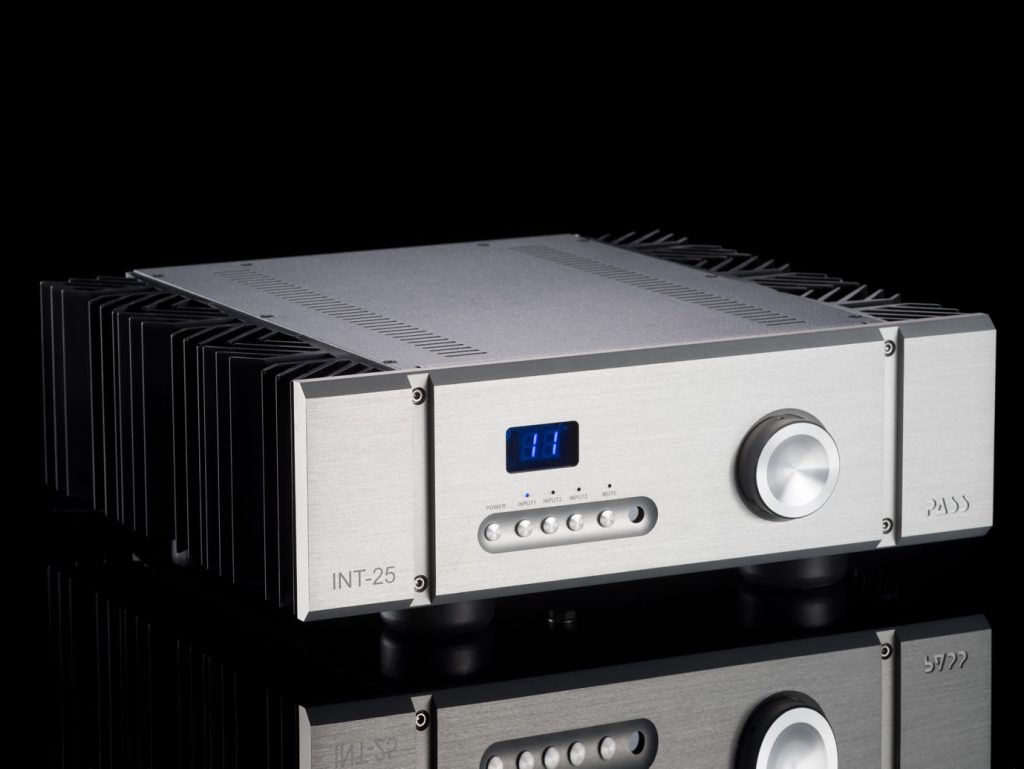
Pass Laboratories INT 25 Integrated Amplifier $7250
I've had the pleasure to review several very fine audio components in 2020, but none were as compelling a musical voice as the Pass INT 25 Integrated Amplifier. The INT 25 couples a terrific sounding amp section (based on the highly regarded XA 25 amplifier), to an equally wonderful linestage designed with trickled-down tricks from the top-line Pass linestages. The INT 25 has three single-ended inputs delivering 25 watts of glorious Class A power at 8 ohms from its single-ended output. Simple? Perhaps. But within its simplicity, is a reference level component built for a lifetime of musical enjoyment.
Aside from the bad dad-joke humor, my review fully conveys how wonderful I think the INT 25 sounds. Pass Labs separates are the bedrock of my reference system, and yet the thought of keeping the little Pass integrated crossed my mind more than once. It still does. Kudos to the entire Pass Labs design team!
Read more HERE
Victor Chavira

iFi Audio's Zen Can Headphone Amplifier $150
The Zen Can's feature set distinguishes itself in the headphone amp market at this price. Therefore, I hereby bestow my Writer's Choice Award to iFi's Zen Can. The excellent sounding Zen Can is the right product at the right price for these challenging times in quarantine.
Toward the end of the review period, I had the opportunity to experience the debut broadcast of David Bryne's American Utopia on a $10k speaker/amp combination under review. Instead I chose $150 Zen Can and vintage SR60, wonderful!
Read more HERE
Michael Corsentino
Rythmik Audio F12G Direct Servo Subwoofer $1109
There are a plethora of high performance sub woofers with equally high dollar price tags for two channel enthusiasts to choose from, those from REL, JL Audio, and SVS to name a few. All worthy candidates, all with much to offer the discriminating audiophile and all with prices commensurate with performance at the top of their respective ranges.
That said, when it comes to high performance subs without nose bleed prices the field narrows. What about subs for the rest of us? Is accurate, tight, controlled bass reproduction available only to those with deep pockets? Happily no! Texas based and factory direct Rythmik Audio offers a range of audiophile grade subwoofers with surprising performance to price proposition. If Rythmik Audio isn't on your radar I would argue they should be.
Rythmik Audio's F12G Direct Servo Subwoofer, 1 of 3 of my Positive Feedback 2020 Writer's Award recipients, is only $1109…delivered! Based on my experience, a major value. The F12 is a sealed sub with a 12" high excursion, custom sensing coil driver, available in a variety of finishes, and driver and connectivity options. I've had extensive hands on with both the F12SE (silver cone option) in the past, and more recently the F12G with the GR Research paper cone driver option, hence the "G" in F12G. Both finished in Rythmik's gorgeous gloss piano black.
After a considerable amount of research comparing the usual suspect high performance subs I instead opted for a pair of Rythmik's F12Gs to add significant bottom end to my Magnepan 3.7i Planar Magnetic speakers without breaking the bank. Not only were they considerably more affordable than competing brands to implement in a dual sub configuration but Rythmik's Servo Sub technology and the F12G's GR Research paper cone driver option both provide exceptional speed and efficiency, a key factor and a match made in heaven for Maggie owners looking to integrate high quality subs with little to no coherency down side.
Keep in mind regardless of which brand you choose subs are about more than just bass. Their ability to create a realistic sense of space and presence is equally important. Rythmik's F12G easily checks these boxes with it's first class technology, frequency response from 14 - 100 Hz (-2dB @ 14Hz), exceptional build quality and stand out sonics. The proof is definitely in the pudding, and in my experience the F12G is ever bit a winner on all counts from bass to space to presence. Rythmik's Servo technology and GR Research paper cone combo do an exceptional job delivering tight, articulate, accurate, fast and most importantly realistic bass. Incorporating the 2 subs I received for review was also effortless. The best subs are those you forget about but would sorely miss if they weren't there, the F12G is that sub!
Suffice it to say, I'm betting after adding one or two F12 Servo Subs you will be instantly surprised by the improvements they make at any price. If you're like me you'll wonder how you ever got along without them. Recommended!
Wireworld Oasis 8 Interconnects & Speaker Cables from $100
Continuing with value proposition products I'd like to call your attention to Florida based Wireworld's Oasis 8 interconnects and speaker cables. I know what you're thinking, another cable company? Look I get get it, there are a lot of cable companies but when I find gems like these I'd be remiss not share them.
I recently decided to move the VPI Cliffwood turntable in my bedroom system bedside for easier nighttime vinyl spinning. A pair of 25' RCA interconnects were needed to make this happen. These would be used to bridge the gap between the Modwright PH9.0 Phono stage sitting next to the turntable and the NAD M10 Streamer/DAC/Amp located across the room driving a pair of KEF R3 Bookshelf Speakers.
I'm sure you know all too well prices for quality cables can quickly reach into the stratosphere, something I didn't feel justified for a bedroom system. A quick call to friend and Oklahoma dealer Jeff Harris of Reference Analog brought Wireworld's Oasis 8 interconnects to my attention. I'm happy to now pass on his excellent recommendation.
Prior to this I had no experience with Wireworld. To me they were just another on a long list of cable companies. Wow was I wrong. What I've learned since is that Wireworld's cables are first class. This years Writer's Award focus specifically on their Oasis 8 interconnects. Why? Because in my experience given their performance they are excellent cables at very reasonable prices.
Wireworld agreed to send me a set of Oasis 8 RCA interconnects but asked that I also allow them to send a complete loom of Oasis 8 interconnects and speaker cables in order to experience their full effect. They would be replacing Nordost Purple Flair, no slouch!
The verdict? In my system Oasis 8 interconnects and speaker cables far exceeded my expectations. Their presentation is clear, crisp, uncolored, neutral, transparent, with plenty of detail, bass, and musicality. Honestly there is no downside with these cables. As the saying goes they preform well above their price category. Wireworld Oasis 8 are my new go-to recommendation for anyone on a budget looking for high quality cables.
Audio-Technica AT-OC9XML $549
Audio-Technica's AT-OC9XML Moving Coil Cartridge gets my third and final 2020 Positive Feedback Writer's Award continuing the value proposition theme. The AT-OC9XML is an insane value at only $549. With 0.4 mV with an aluminum body, a Microlinear stylus with a nude square shank this cartridge is a stunner that easily trounced a $1200 Dynvector 20X2L providing more body, better natural musical tone, a wider soundstage, and substantially more fleshed out dynamics.
I can't say enough good things about the AT-OC9XML, it's an exceptional cartridge and an exceptional value. If someone blindfolded me, played a record using this cartridge and asked me to assign a value based strictly on what I was hearing I would guess $1200 to $1500 without hesitation. My AT-OC9XML is installed on the VPI Cliffwood mentioned in the award above but it would be just at as home on VPI Scout, Prime or the like, its that good.
Larry Cox
E.A.R. Phono Classic $1895/$2595
Christened the E.A.R. Phono Classic for the US, though called the Phono Box by Ken Kessler, it is Tim de Paravicini's successor to E.A.R.'s 834P. The 834P was on the market for about 25 years, fourteen of which it thrived as my reference phono stage. It was for many others an easy, confident recommendation for music lovers at and above its price range. Both the 834P and the Phono Classic feature three tubes with gain sufficient for MM (55dB) and MC (72dB) cartridges. Whereas the 834 was offered with ECC83s/122AX7s, the new Phono Classic is sold with 13DJ8 tubes, which Tim believes are more reliable than the current production of 12AX7/ECC83 tubes. I tried and enjoyed the 13DJ8 before swapping jumpers to accommodate my NOS ECC83 tubes, (NOS Mullard CV4004). Both tube types were brilliant with my low output moving coil cartridge. If the venerable 834P was rich and friendly with a fuller than tighter bottom end, the Phono Classic is more matter of fact with the 13DJ8 tubes with a tauter and deeper bottom end as well as more precision from top to bottom, including striking imaging. My stash of NOS 12AX7s provided a more fluid presentation with a slightly more beautiful and plush presentation evincing a more relaxed and round character, while retaining the tighter bass lines present with the 13DJ8 tubes.
The Phono Classic's chassis looks less like a hobbyist product than the 834P with a well considered visual presentation. Its half the height of a shoe box with understated graphics and looks much nicer on a rack. Available with or without a volume pot in an elegant black iteration for $1895 or in E.A.R.'s chrome finish, again with or without volume pot for $2595. This is a no brainer recommendation, at a relatively affordable cost. Whether it's your first step up the food chain or your last, the Phono Classic is a wise and easy musical choice. (Review forthcoming)
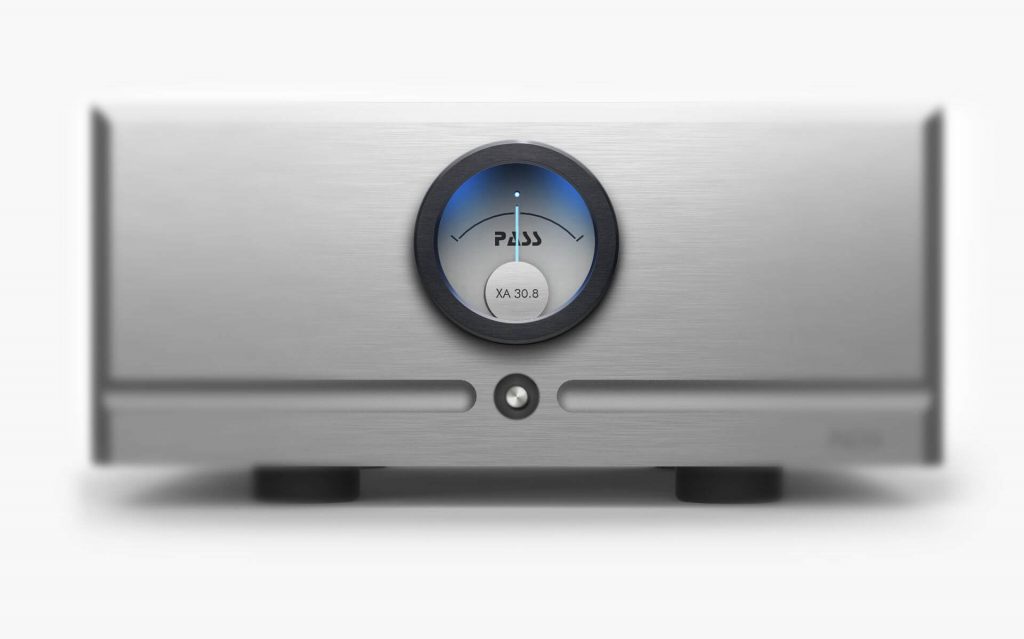
Pass Labs XA30.8 $6800
In 1851 Lafayette Bunnel stumbled into the area we call Yosemite—a surprise of grand proportions. By the 1860s JM Hutchings had taken up residence, not as a discoverer but as a delighted occupant of Yosemite. So it is that I have discovered the XA30.8 four years after others trumpeted its debut. It has enjoyed years of accolades. Does it deserve them? Yes. Though presented as a 30 watt class A amplifier, it reaches into its transformers to push out up to 200 watts in A/B operation. It has been more than sufficient for my 87dB floorstanding speakers.
Some writers have called it "tubey." Okay, I can agree with that, if your criteria are tubes' continuousness, liquidity, and sweetness. It is, er, a honey of an amp, but it does not serve up the palpability of tubes, no problem for me. Bass through my Pass XP 12 preamps' balanced outputs (double the voltage of the single ended) are monstrously powerful. Treble is sweet, extended with solidity, rather than a diffuse and "airy" sound that lets triangle sounds hit with force and sparkle. Its footprint is hard to discern because its performance beguiled this critical listener such that I say "not a false step" with the XA30.8. I will have more to say as I work through my review, shortly. At $6800 I think you get your money's worth.
Read more HERE
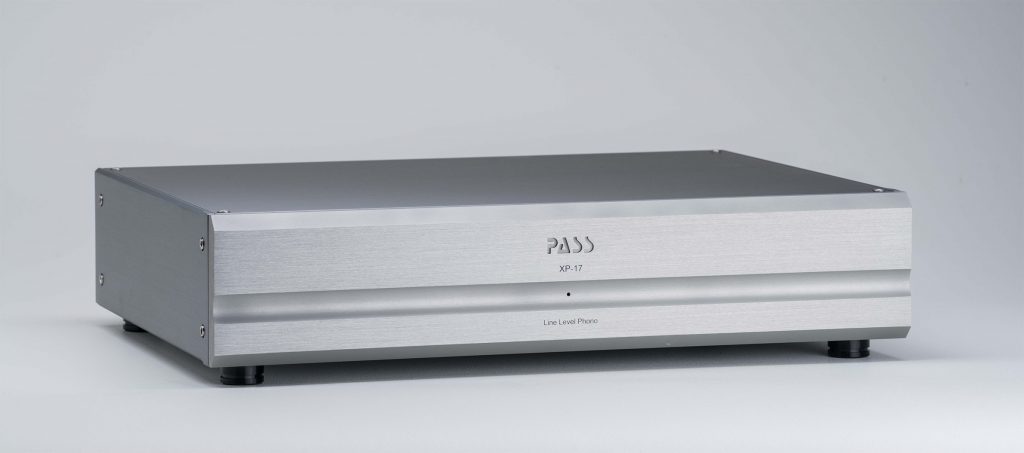
Pass Labs XP17 Phono Stage $4300
Quiet. Composed. Powerful. Pass' least expensive phono stage, the XP17 is amazing. Troves of information are revealed, rather than thrown at keen listeners. Like the pause after a vacation, the XP-17 let me appreciate music I own, it's the same LP only different and more enjoyable. Perhaps not the preamp to convert a tube-o-phile, even a tube fascist will have to acknowledge its excellence.
The XP17 is a not inexpensive entry into remarkable performance. ($4300) I was smitten with its performance, it's a peek over the hedge of what I've thought as "great performance" into another domain of delight. Gain and loading options are available on the back of he preamp, it is ready for the inveterate tinkerer. Without diminishing the less than half as expensive E.A.R. Phono Classic, the XP17 is a distinct step up, with a quieter, more resolved and informative presentation. While boldness and nuance are on display, I most appreciated its ability to communicate the uniqueness of the recordings on hand. Colors are quite deeply hued, leaning ever so slightly toward the richness of say, an oil painting, versus the lighter, less dense hue of the water color depth of many solid state preamplifiers. Timing and touch are the domain of this preamp, 50's jazz and roots music had a "you are there" intimacy and specialness that I think most audiophiles crave. To my ears, the XP17 is a destination phono stage for those wanting to nibble at the fringe of costly electronics or a pass into even greater phantasmagoric audio delights. (Review forthcoming)
Jeff Day
Every year when I receive the message from Editors Dave and David that it is once again time for Positive Feedback writers to turn in our three Writer's Choice Awards for the year, I reflect back on my year in audio, the products I've written about for Positive Feedback, and my long-term impressions about them.
The Writer's Choice Awards always creates a personal drama for me, as I down-select to three from a group of high-performance artisanal audio products that I have written about over the course of a year, with each potentially deserving the recognition of a Writers' Choice Award.
However, only three can make the final cut, so now for the drum roll announcing my three Positive Feedback Writer's Choice Awards for 2020!
Sorry, I just couldn't do it. I just couldn't narrow it down to three. So, after I wrote the above sentence, I sent a message to Editors Dave and David, pleading with them to allow me to splurge this year and recommend five awards to recognize these five significant contributions to the audio arts.
Thankfully, I was given permission by our gracious Editors Dave and David, and so now for another drum roll, and my five 2020 Positive Feedback Writer's Choice Awards for 2020 are:
The Audio Note (UK) Oto Phono SE Signature Integrated Amplifier – An Affordable Masterpiece! $6330
The Audio Note (UK) Oto Phono Signature integrated amplifier is one of Audio Note (UK)'s "entry level" products, but regardless of its position in the Audio Note (UK) product lines, the Oto Phono Signature integrated amplifier is one of the finest performing audio amplifiers I've ever had in my home at any price.
The EL84 parallel singled-ended-pentode Oto Phono Signature integrated amplifier unfailingly delivers the music in an engaging fashion. Whether I am listening to vinyl through the Oto's phono stage, or listening to digital through its line stage, the Oto never disappoints, and always delivers the maximum dosage of music to my soul.
Mastering engineer Steve Hoffman commented to me, "I use an Audio Note (UK) Oto Phono SE Signature in my studio. It's amazing, especially for the money, a really nice EL84 unit that does it all." And "the Oto has everything I need in the studio, phono section, tape/EQ loop, everything."
I agree whole-heartedly with Steve, and suggest you give an Oto a listen for yourself.
The only caveat that listeners will want to keep in mind with the Oto is that its power output is 10 watts per channel, so one will want to use relatively easy to drive loudspeakers with it, like Audio Note (UK)'s own loudspeakers, for example.
The Manufacturer's Suggested Retail Price for the Oto Phono SE Signature is $6330 USD, which I think is a very fair price considering all of its features, its excellent phono stage, its superbly hand-crafted nature, its uber quality of materials, and its world class musical and sonic performance.
Read more HERE
The Leben HiFi Stereo Company CS-600X Integrated Amplifier – An Old Friend Gets Even Better! $7995
I've been the happy owner of the original Leben CS-600 integrated amplifier for over a decade, and with a little luck I hope to continue to be a happy owner for a couple of more decades!
As a side note, I purchased the CS-600 after I reviewed it, and I have enjoyed every minute with it, which is probably one of the greatest endorsements an audio writer can give a component.
Hopefully, the above statements give you an idea of how highly I regard the original Leben CS-600 integrated amplifier, and the new Leben CS-600X integrated amplifier that replaces my earlier version is even better.
The new version has identical features to the original, and betters the original with a new vacuum tube complement for the input / driver stage that improves overall musicality by quite a lot, as well as opens up a variety of current production vacuum tubes for playing substitution games.
There's lots of fun to be had with the Leben CS-600X!
The new Leben HiFi Stereo Company CS-600X integrated amplifier is imported to North America by Jonathan Halpern's Tone Imports, and retails for $7995 USD.
Read more HERE
July 2020: Sexy Blue Tubes, Part 2, The Sophia Electric EL34-ST and KT88-ST Vacuum Tubes! $125
I have had a long-term appreciation of the high-performance specialty vacuum tubes offered by Sue and Richard's Sophia Electric, in McLean, Virginia.
Whether it be the Sophia Electric 300B power tubes, the Aqua 274B rectifiers, the EL34-ST power tubes, the 6SN7 input / driver tubes, or now the Coke-bottle KT88-ST long life power tubes, they have all impressed me with their fine performance.
Richard told me, "From a design point of view, the Sophia Electric KT88-ST shares similar internal metal material: grid, plate, etc., and mineral coating - in addition to ST glass - as the popular Sophia Electric Classic 300B tubes. The Sophia Electric blue glass KT88-ST tube sounds very much like a 300B tube and delivers 8x more power in a push pull KT88 amp."
I found Richard's characterization of the Sophia Electric blue glass KT88-ST tube as sounding very much like a 300B tube that is eight times more powerful in a push-pull KT88 amplifier intriguing, to say the least, and that certainly was the case with the KT88-ST in the Leben CS-600X integrated amplifier.
The Sophia Electric KT88-ST does remind me of the voicing of a classic 300B vacuum tube, with a smooth, rich, nuanced, and voluminous presentation of music and film.
Of all the KT88 tubes I've listened to over the decades, the Sophia Electric KT88-ST represents my performance apogee for that family of vacuum tubes, both from a musicality perspective, and with respect to its superb audiophile-style visuospatial performance—it is a winner!
Pricing starts at $125 USD per tube with a 30-day warranty.
Read more HERE
The Pass Labs XP-12 Line-Level Preamplifier: A Musical Masterpiece! $5800
The Pass Labs XP-12 line-level preamplifier is a versatile and well-balanced design that will delight listeners with its musical and sonic prowess.
The Pass Labs XP-12 line-level preamplifier enhances listening pleasure by easily accommodating a wide swath of music from any recording era, recording quality, or musical style, with aplomb, which will delight music lovers wanting to explore a wide variety of music.
The overall voicing of the Pass Labs XP-12 line-level preamplifier was that of clarity combined with natural sound, a sort of relaxed clarity and grace, along with liquidity, that blurs the distinction between vacuum tube and solid-state amplification performance in a tantalizing way, by offering the natural warmth, liquidity, richness, and dimensionality of vacuum tubes, while still providing lots of that solid-state resolution and clarity, not to mention maintenance-free operation.
The Pass Labs XP-12 line-level preamplifier was designed by the brilliantly talented Wayne Colburn, who prefers to maintain a low profile by being a "wizard being the scenes" at Pass Labs. However, after hearing Wayne's XP-12 line-level preamplifier, I think we should be shouting Wayne's name from the rooftops!
The Pass Labs XP-12 line-level preamplifier's solid-state design features superb build quality, an attractive appearance, high-performance, and a useful remote control that makes it a pleasure to use on a daily basis.
Read more HERE
Audio Note (UK) CD 2.1x/II Level Two Red Book CD Player $3874
The Audio Note (UK) CD 2.1x/II Level Two Red Book CD Player was able to inject a dose of fun, adventure, and immense listening satisfaction into my life in a way that was completely unexpected by this old analog stalwart.
After dusting off my large collection of Red Book CDs and doing some listening, I realized that this brilliant little CD player had an uncanny way of turning ones and zeros into liquid analog-like naturalness, and delivering the soul of the music directly to my heart from every CD I listened to.
The Audio Note (UK) CD 2.1x/II Level Two Red Book CD Player got me so excited about the music lurking within Red Book CDs, that I even went out and bought a bunch of new CDs so I could hear them transformed into music through this endearing CD player.
The Audio Note (UK) CD 2.1x/II Level Two Red Book CD Player is very, very, highly recommended for getting the most out of your Red Book CD collection!
As always, thanks for stopping by Positive Feedback, and may the tone be with you!
Francisco Duran
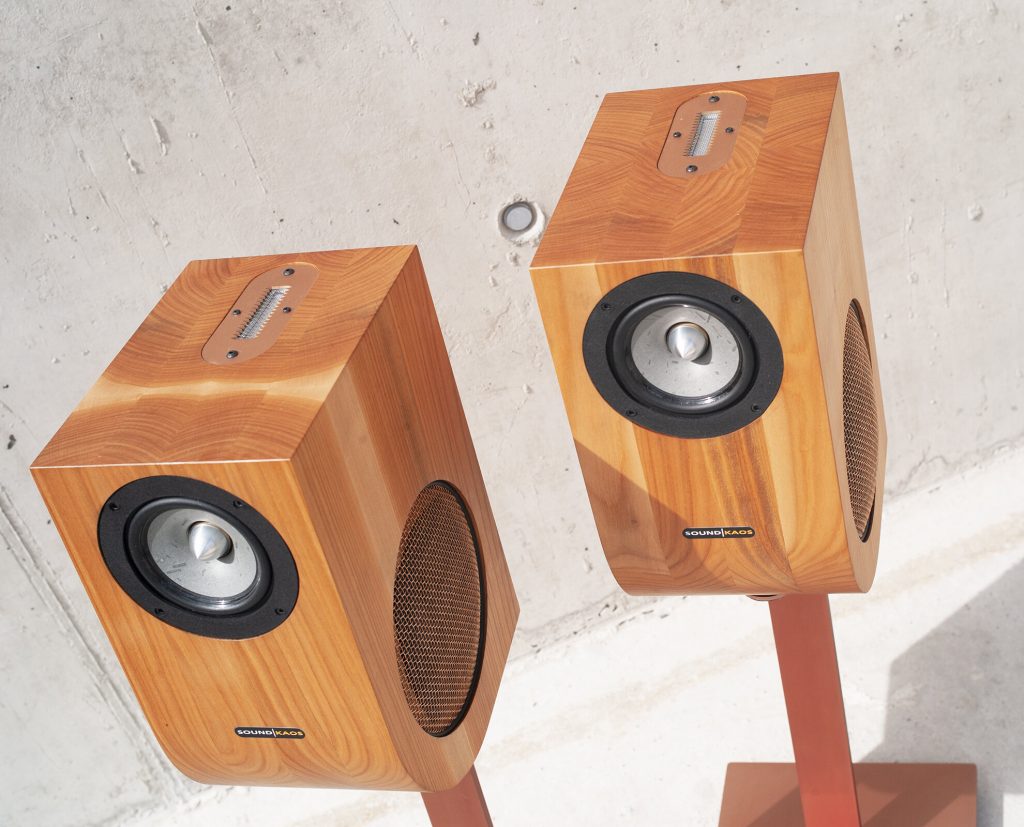
Soundkaos VOX 3f Loudspeakers $6250
When I reviewed the Soundkaos VOX 3f speakers I did not emphasize how rock solid and beautiful the cabinets were. Rapping them with the knuckle test, you get the feeling that they were hewn out of one piece of solid walnut. Somehow the word "box speaker" doesn’t apply here. Although designed with four drivers in each cabinet, they pull off the trick of both looking aesthetically pleasing and reproducing sound in a very functional and coherent way. In other words, the eight drivers in these two cabinets work as a seamless whole to produce music. And this model doesn’t have the parts upgrade as in the VOX 3a or the VOX 3afw with the "Less Loss mechanical filters."
What struck me most about the sound coming from these speakers was the way cymbals were reproduced. "The cymbal strikes sounded so whole, so realistic, and hung and floated in the air like I have never heard before." But it doesn’t stop there. These speakers reproduce solid, taut bass down to their spec, a very natural midrange and again, a clear, clean, extended and very realistic treble range.
The sound coming from these little guys filled my 20' x 12' den with ease. No doubt in part due to the configuration of that up firing Raal ribbon tweeter. They handled all manner of musical genres and movies with a naturalness and realism that made it very easy to listen to whatever was playing. Finely crafted, well designed and highly musical definitely apply here. A no brainer for my Writer's Choice Award.
Read more HERE
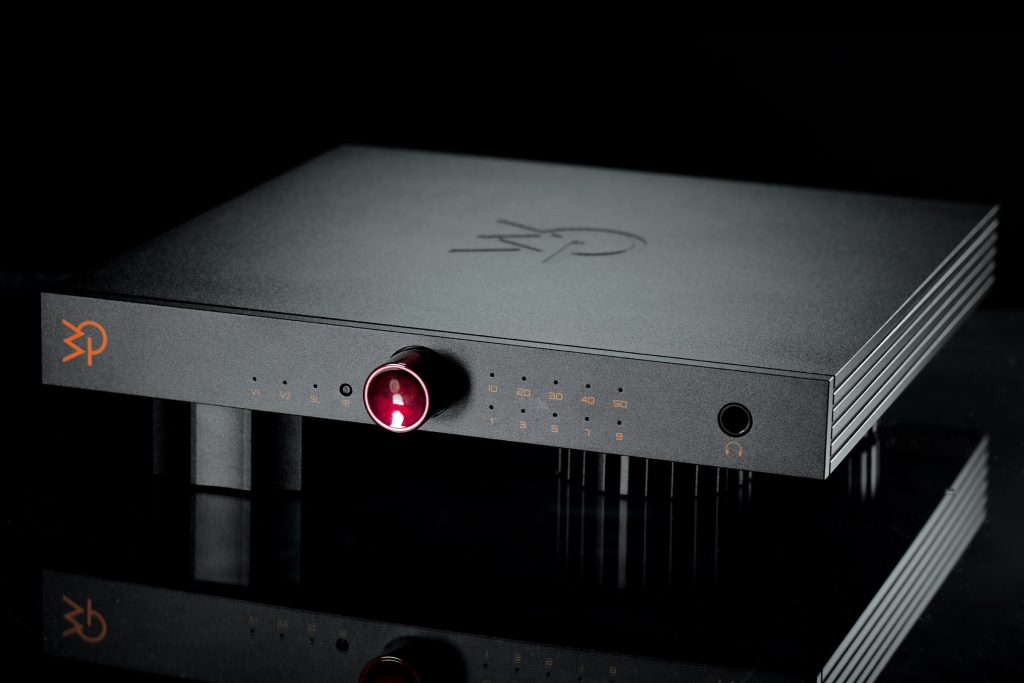
Bakoon AMP-13R $6000
Small but mighty. This phrase aptly describes the Bakoon AMP-13R integrated amplifier. It was touted to be a good match for the Soundkaos VOX 3F speakers that were also from Bakoon International Inc. Although not much bigger than an actual headphone amp, it is every bit a full-fledged integrated amplifier. With its transformer serving as its footer, and its footers serving as heat sinks, it is definitely an interesting design to say the least. But its real claim to fame is its circuitry. It is called the Jet Satri circuit, which is an ultra-fast, wide bandwidth, full discrete design with zero negative feedback. And as I stated in my review of this little powerhouse, "this technology is the real deal and not just a company catch phrase."
But the proof is in the listening. Fast, dynamic transients, full bodied, well integrated, realistic timbres, natural tonal balance, smooth top end, without a hint of brightness or distortion, nicely detailed were the words I used to describe the sound of this amplifier. Or should I say, music making abilities. It is a high-rez amp that has the ability to draw one into the music with a slight warmth and just a smidge of darkness. If you can get by with its three inputs and relatively low power, you are in for a musical treat.
Read more HERE
Tom Gibbs
Euphony Summus Music Server $2490
My initial impression of the Euphony Summus—based solely on its appearance—was that it's an exceptionally beautiful piece of audio equipment. Encased in a gorgeous, heavily customized Asaka Plato X8 fanless Intel NUC aluminum case, it's dominated by an impressively large, machined Euphony logo on the milled aluminum front panel. But don't be fooled by the stunning good looks; under the hood, there's an Intel Core i7-8559U 4.5GHz processor that's been hot rodded with 16GB of DDR4 RAM. The Euphony Stylus OS resides on the included internal 1TB solid state drive; you can add additional 2.5-inch SSD storage in increments of 1TB up to 4TB total for all your music files. The supplied review unit had two front panel USB 3.0 ports, along with a power switch; the rear panel includes an additional USB 3.0 port, a USB C port, an HDMI port, and a standard ethernet LAN socket. The switching power supply that came with the Summus looks basically like one that comes standard with any laptop.
The Summus offers several big selling points to the serious audiophile who might be interested in exploring digital music streaming. Primarily, it has some seriously well-engineered software that helps to improve music playback by reducing the amount of required CPU usage to an absurdly low level. And here's where the seemingly overkill 16GB of RAM comes into play: in two of the available playback modes, Euphony uses a ramroot process where your files are loaded into RAM and played entirely from memory. Which offers the potential for a tremendous advance in sound quality over conventional playback. And the Summus is designed to accommodate a couple of different trains of thought in computer audio playback: if so desired, you can load your music files into the drive(s) installed within the unit, and it can serve as a fully-functional streamer/player/library organizer. Those with Roon or HQPlayer accounts will probably be more interested in the second option, which is a dual-PC arrangement. In which a second PC—like a laptop on which your Roon core resides—is also used for the Summus to easily access (via your home network) your Roon library as well as streaming accounts like TIDAL or Qobuz.
The Summus continues to be a part of my ever-changing system—which has included some remarkably good equipment lately—and it continues to astound with its seemingly unlimited capacity to provide detailed, lifelike, and tuneful re-creations of music from a variety of digital source files. I recently upgraded the Summus setup with an additional 2TB Samsung 870QVO SSD for music storage, and I discovered an unexpected benefit during Ramroot playback. After the source files are copied into the Summus' 16GB of RAM, the SSD storage drive then becomes inactive, which will greatly extend its useful life over time—it's absolutely brilliant! And I recently figured out how to make the 2TB SSD that contains my music visible to my home network, which makes Roon interaction and music sharing a snap. While I really loved Roon—especially its playback sound quality—the Summus is a huge leap over Roon in every aspect of music playback, and its integration of Qobuz and TIDAL is so effortless, I could easily walk away from Roon and never look back. The Summus is an extremely elegant, single-box music server and streaming solution, and the price is very reasonable for everything it brings to the table. And I've heard a lot recently about significant improvements to Summus' sound quality by the addition of a linear power supply—that would be the icing on the cake, and something I plan on exploring in very short order. The Euphony Summus is very highly recommended!
Read more HERE
Magna Riser Airborne Loudspeaker Stands for the Magneplanar LRS $229
I had already decided that, right out of the gate, when the Magneplanar LRSs showed up for evaluation, I was going to review them strictly stock, as supplied from the factory. That decision lasted about two days—I hated the stock stands with an absolute passion. The stock Magneplanar stands offer a ridiculously limited range of adjustment, with the Maggies always in a backwardly-angled position. And, while the stand configuration is somewhat rigid, it's simultaneously also ridiculously flimsy, which negatively impacts the overall sound quality of the speakers. I loved most of what I was hearing from the LRS, but 1) the bass was relatively tubby and poorly defined; 2) the lack of rigidity was causing some mid-bass panel flap around the speakers' rivet positions; and, 3) my extensive personal experience with Magneplanars has shown that the speakers sound and image their very best with the panels in a completely upright position. None of that is possible with the stock stands; Magneplanars are built to a price point, and upgrading the supplied stands in any way on their end would price the LRSs out of their intended market.
Enter the Airborne Stands from Magna Riser: a custom built, Made in the USA metal stand with not only what appeared to be tons of good science behind them, but pretty stunning good looks, too! And priced very attractively—the Airbornes' MSRP is currently $229 USD. That's about half the price of many competing stands from other manufacturers. And the Magna Riser website offers stand models to fit just about every Maggie that ever—or currently—exists. The Airborne stands create the impression from their appearance that the LRSs are simply "floating in air"; a handful of emails and a couple of phone calls to Magna Riser's Robert Raus got the ball rolling on getting a review pair delivered.
The Magna Riser Airbornes have elevated (pun intended!) my enjoyment of the LRS loudspeakers to an apex I would have thought previously impossible. By getting the panels upright and off the floor, the overall musical presentation is remarkably enhanced, to the point that the LRS is virtually transformed, and is now no longer simply an entry-level gateway to Magneplanar's more expensive offerings: they can easily compete on an equal footing with higher-priced Maggies. The audible improvements the Airborne stands help bring to the LRS are not subtle; they truly eliminate or help ameliorate virtually all of the initial problems I found with the LRS's playback abilities. Adding the Magna Riser Airborne stands helps the LRS sound more like a much more expensive pair of loudspeakers than the mere $650 they retail for.
I now see that Rob has a new, different stand for the LRS, the Multi-Riser Mk. 7, which also fits a wide range of Magneplanar legacy loudspeakers, and allows the option of getting the LRS even higher off the floor for improved vertical dispersion. That would be a real boon to those who like to either stand or walk about the room while listening, and would assist in helping to correct the one fault I found with the LRS—the image height is a tad lower than ideal. At their very reasonable price, the Magna Riser stands are an absolute steal, and are also absolutely necessary to get the full spectrum of what the LRS (or any Maggie, for that matter!) are capable of. I'm incredibly impressed with the level of science, research and development, and product quality that Rob Raus has given us with the Magna Risers; they're very highly recommended.
Read more HERE
Fidelizer EtherStream Network Switch $395
Computer-based audio and the streaming of digital file sources definitely has the potential to introduce noise sources that might not otherwise be present in more traditional, analog-based playback systems. Having experienced the outstanding noise reduction capabilities of optical streaming in my system, I was pretty convinced that it was the best path for noiseless playback, despite the somewhat excessive cost of the various components. Keetakawee Punpeng of Fidelizer reached out to me late last year to offer a review of his new EtherStream Network Switch, which took an already good Cisco design and made significant modifications to critical stock parts, all with the intent of reducing the transmission of noise to your system via your home network. I'd recently had the Sonore Signature Optical Rendu in my system for evaluation, and I still felt that I had a very fresh frame of reference for the sound of streaming through my system with an optical cabling as compared to streaming with copper ethernet cables. So I didn't really think it would be difficult to objectively judge the ability of the EtherStream to influence the music playback process.
Keetakawee made the following modifications to the stock Cisco switch: 1) The input capacitor has been replaced with an upgraded version with high capacitance and low impedance that's tuned for optimal performance. 2) Safety resistors have been upgraded with high power versions from Vishay Dale on the DC input stage, power regulation stage, and isolation transformer stage. 3) The power supply has been re-energized with special tantalum capacitors to effectively reduce noise and interference in the processor chip. 4) The crystal clock has been upgraded with a high quality clock from Japan, with additional noise reduction tweaks applied. 5) All components are soldered with high quality solder, with the intended result of helping to provide more solid bass and improved dynamics. The unit as supplied includes a stock power supply, but an improved linear power supply is now available for the EtherStream switch.
Elimination of noise from your playback really helps you sit up and listen closely to the music! With optical streaming, I really thought I was about as close as I could possibly get to the musical truth, but with the EtherStream—the overall sound quality is shockingly close. In fact, so much so, that all of my recent thoughts with regards to going all optical have now completely changed—the EtherStream is giving me probably 95 percent (or better) of the clarity and transparency that I was getting through the optical experience. Seriously, it's virtually a wash! When compared to the NetGear switch that typically resides in my system, the EtherStream delivers a sound that's not only deathly quiet, but punchier in character, with deeper, more defined bass and a significantly more liquid midrange. Fidelizer has done it again, and the EtherStream is very highly recommended!
Read more HERE
Malcolm Gomes
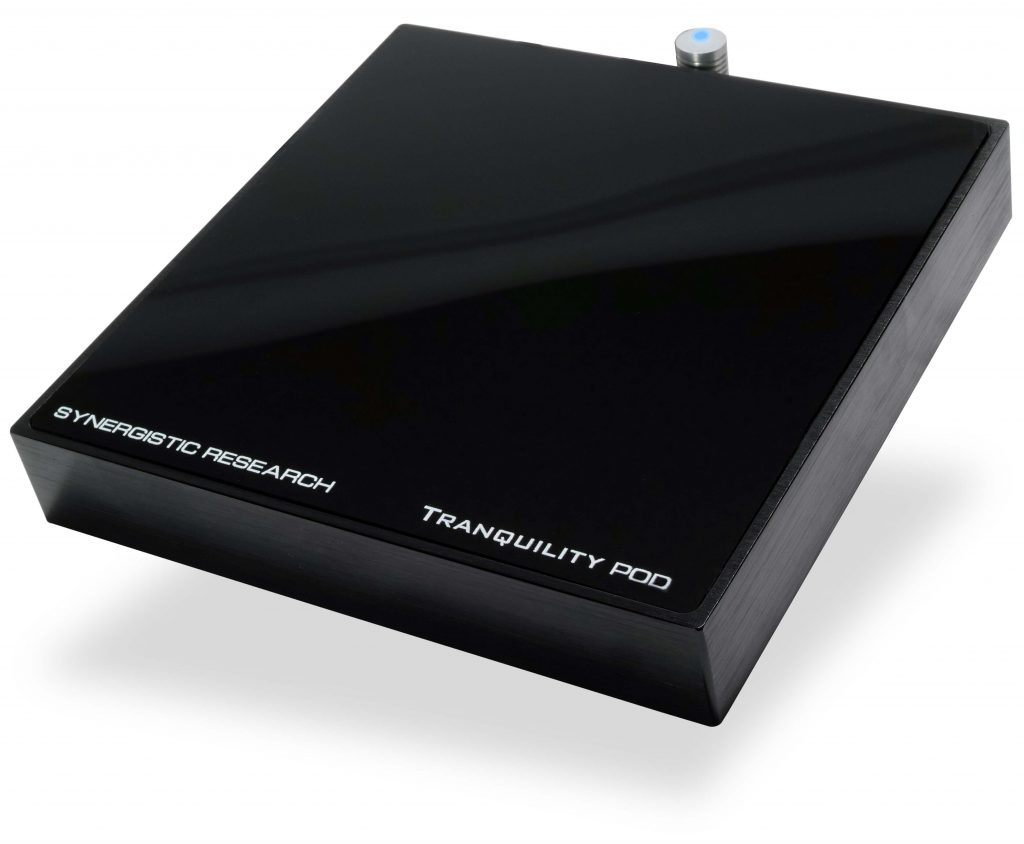
Synergistic Research Tranquility Pod $750
Synergistic Research's new Tranquility Pods deliver many of the advantages of their Tranquility Base via a component that is small and light enough to fit either on top of or below your audio component. The added bonus is that at $750, the Tranquility Pod is also a lot more affordable compared to the Tranquility Base.
Given its relatively modest price and the apparent positive difference it makes to the quality of sound reproduction, I would have to say that the Tranquility Base is highly recommended for any audiophile looking for a no-fuss, highly effective tweak.
Read more HERE
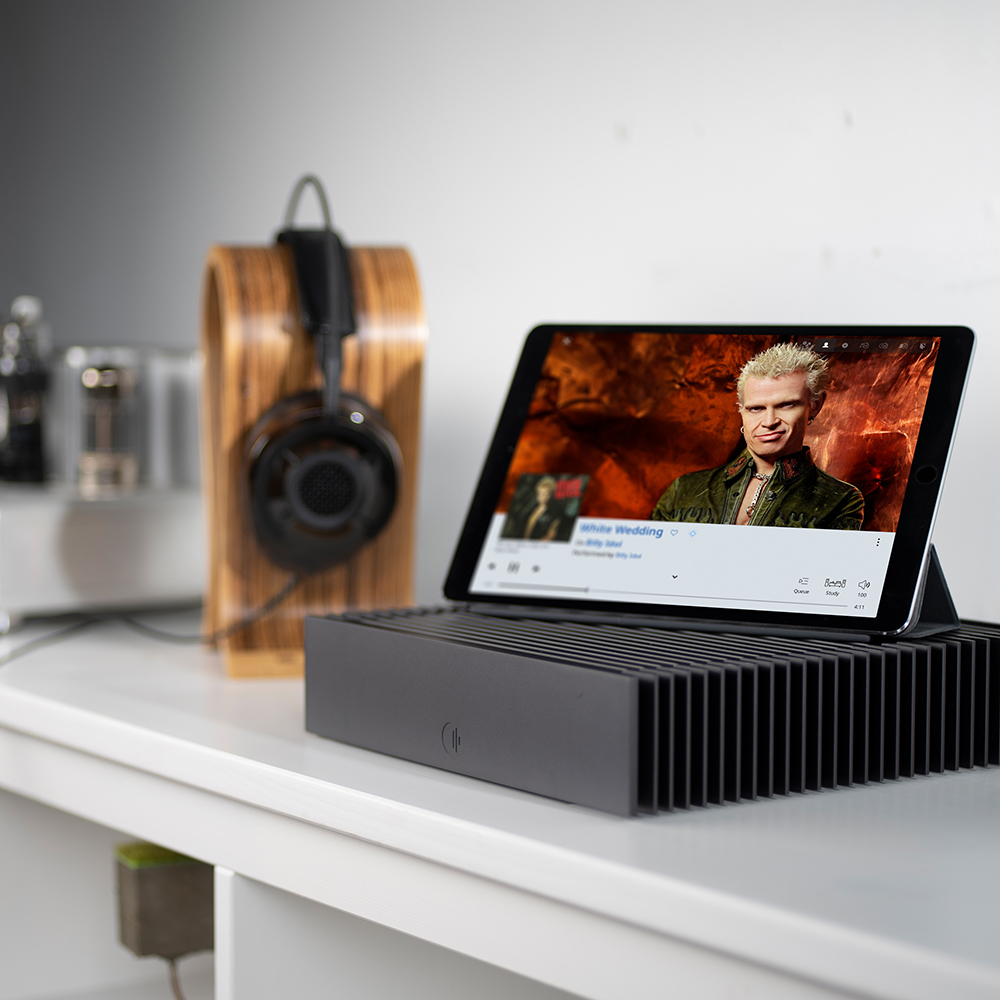
Roon Labs Nucleus Plus Server $2499
The Roon Labs Nucleus Plus Server will not only enhance your listening enjoyment, but it will also give you the peace of mind from knowing that the product is incredibly well engineered, performs at a very high level, and is solidly built.
If you are not exactly a computer whiz, and if you can easily afford to pay a pretty penny for a powerful and reliable plug & play solution, the Nucleus Plus is exactly what you are looking for.
Read more HERE
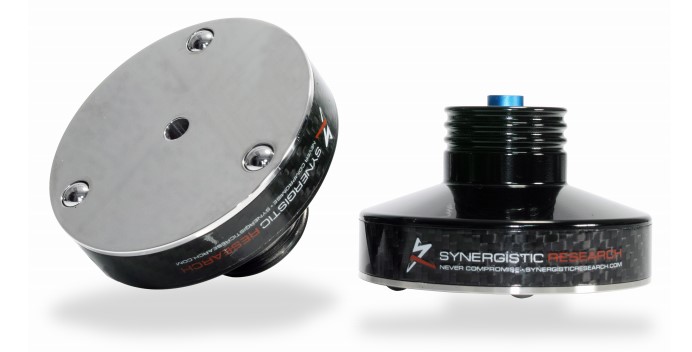
Synergistic Research UEF Record Weight $895
The UEF Record Weight has a very positive effect on the reproduction of the sound stage, in that is makes the sound stage discernibly more stable and solid. I assume that this is achieved because the UEF allows the tone arm and the stylus to read the grooves more accurately.
If you do not have one of those fancy 5-figure or 6-figure price turntables with those crazy heavy platters, you owe it to your ears to try out the UEF. There is a good chance that it will make your turntable sound like you just upgraded it to a model that sports a significantly higher price.
Read more HERE
John Hoffman
SOTA Cosmos Eclipse Turntable $8500
At the beginning of 2020 SOTA Innovations unveiled the Cosmos Eclipse turntable. This 4th generation design retains the classic styling elements of their brand, yet has several notable refinements installed within it. At the forefront is a new magnetic platter bearing that replaces and improves upon the iconic sapphire based design. An all new 3 phase synchronous motor design that is coupled with the Phoenix Engineering controller and tachometer has been fitted to this table. The vacuum platter formulation has been revisited, and the new platter has improved tonal balance across the audio spectrum and places less stress on the suspension. Other elements of the Cosmos heritage are retained, such as the 1-inch aircraft aluminum sub-chassis, the inverted coil suspension, composite arm board, and the classic dovetailed hardwood cabinet.
Donna Bodinet and Christan Griego started with a vision of creating a high-performance turntable that retained the classic SOTA design and was within the financial reach of most audio hobbyists. The final result is the Cosmos Eclipse, which is a refined and nuanced performer that is capable of faithfully extracting all the information contained in a record. Issues such as speed control, uneven tonal balance, vibration and resonances coming from outside sources, well all of these issues are no longer a factor. With the Cosmos Eclipse a person will get faithful vinyl reproduction, as this table allows the tone arm and cartridge to perform at their highest levels. There is no doubt that a Cosmos Eclipse is a significant financial investment, but in return you get leading edge vinyl playback that rivals far more expensive turntables in the marketplace.
Read more HERE
Gary Lea
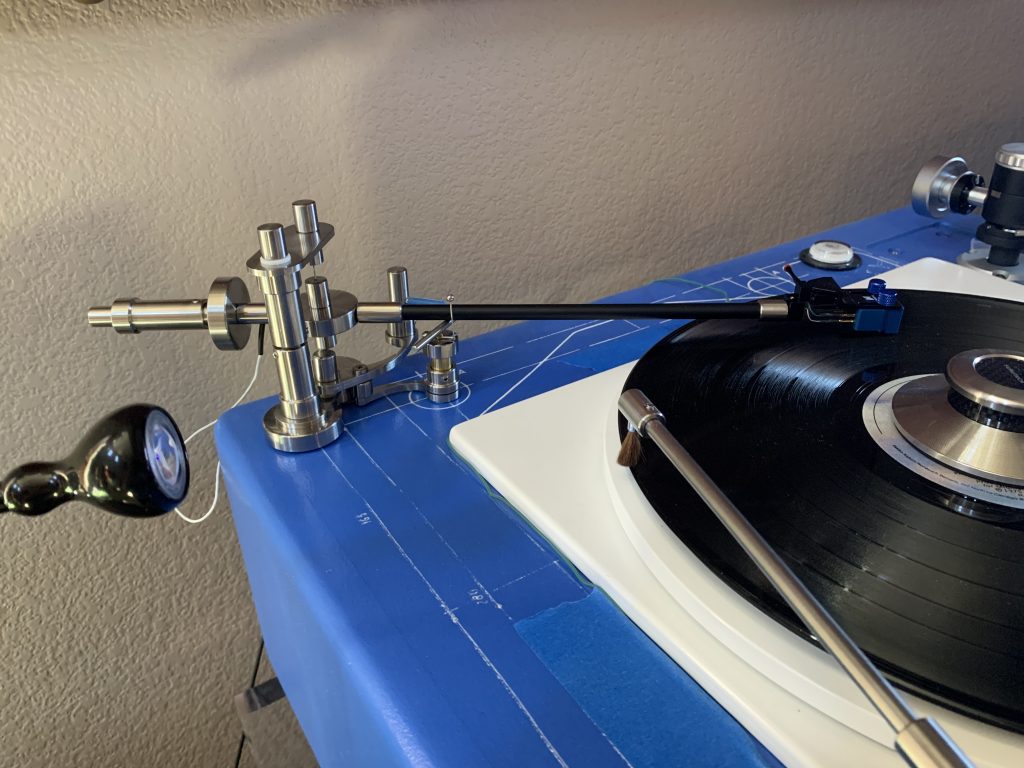
Integrity Hifi Tru Glider Tonearm and Nasotec Swivel Headshell $4000
The Tru Glider tonearm with Nasotec Headshell is perhaps the first truly unique and innovative tonearm since the invention of linear tracking tonearms. The arm is that unique. It does not require a permanent mounting so it can easily be moved from turntable to turntable with minimum fuss. The setup is the easiest I have experienced. Available in Customized Arm length (10, 11, 12 & 14) & Height specific for your turntable.
Some of the more innovative aspects of the tonearm Tru-Glider Pendulum floating stand-alone tonearm.
Average time to set up is about 2 hours to achieve crystal clear soundstage.
No cables to buy, no holes to drill, no bearings, no unipivot, no azimuth, no antiskating, no friction, and no expensive Protractor to buy.
Zero Offset, swing headshell included, special Tru-Lift & Tru-Tee included. The arm is Tested for 4 hours pre-packing. The Tru Glider is equipped with terminated Direct Cardas wires.
Easy to follow video instructions. As always the good folks at Integrity are available via phone for assistance.
It is an easy pick to Nominate for the Writer's Choice Award for 2020. Get you one!
Base Price $4000 US with standard base and tonearm length from 9" to 14". (Price increases depending on height needed)
Read more HERE
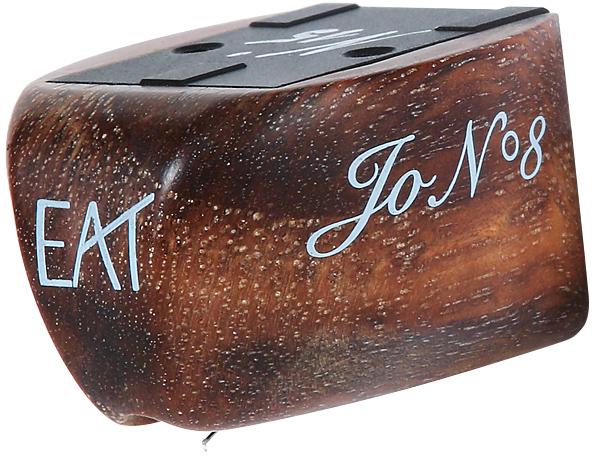
E.A.T. Jo No 8 Moving Coil Cartridge $2495
This cartridge represents an incredible bargain in the market. It can go toe to toe with cartridges costing twice as much on any day. I can ramble on indefinitely about how engaging this cartridge is to listen to for long periods. No fatigue, no matter what I threw at it. The cartridge just gleans the info from the grooves and presents it as neutrally as it can be done without being constrained or over analytical and sterile.
This cartridge should be on everyone's list who are considering upping their game to a mid-priced cartridge. It would take years to get to the point of looking at anything more expensive if it ever came to that at all. A rare over achiever in a world of sometimes over hyped under performers.
Make it part of your journey to check out the Jo No8 and look for it at some point in the future to make it to my reference system list.
Read more HERE
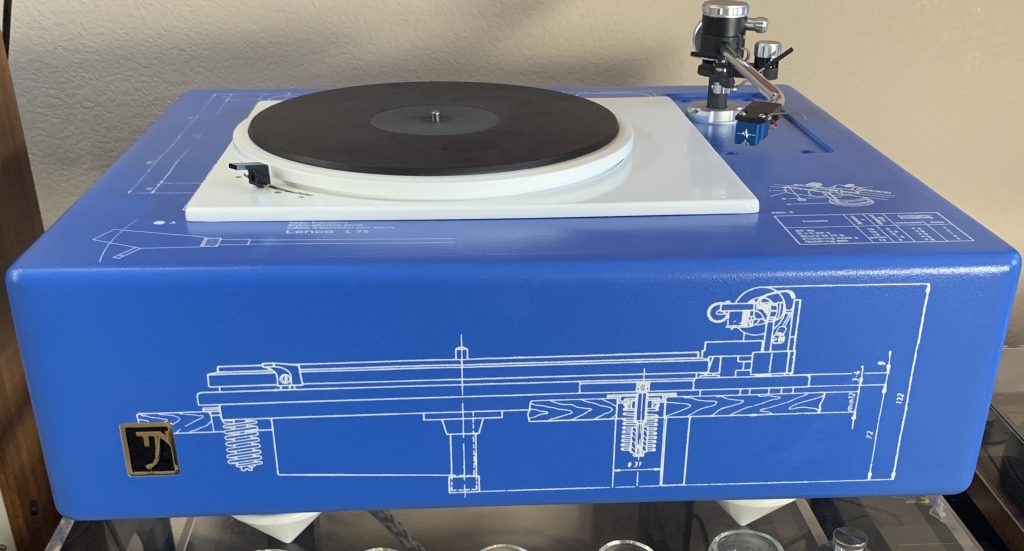
TJN Steampunk Turntable $8750
Jean Nantais, The JN of TJN is the man who brought the Lencos out of the darkness (for many, they were considered the worst of the idler wheel drives due to the vertical wheel) and into the public domain, via his Audiogon thread Building high end tables cheap at Home Depot. That article opened the door to the resurgence of interest in direct drive (since it dared break the stranglehold belt-drive had on audiophiles at that time, earliest 2004). In that thread Jean taught the world how to realize the potential not only of Lencos, but also of all idler-wheel drives.
What we have here is a turntable with brutally accurate speed. Dead silence from the mechanicals. An inert beast of a plinth that rejects all vibrations from surrounding sources, and an easy, if rather heavy and bulky to set up initially, turntable that is as solid as it gets, especially in this price range. That is all you can ask of a turntable, and that is exactly what you get from Jean when you acquire one of his turntables.
When listening to some of my favorite albums I noticed most importantly that everything came from an incredibly dark background. Somewhat like the splashing of neon colors of paint, á la Jackson Pollack, on a black sheet would cause the colors to pop with an incredibly vivid explosion (as opposed to the same effect on a white sheet), everything in the musical palette exploded out of this incredibly black background.
I was impressed enough to buy the table and make it my reference setup. Can't think of a better endorsement!
The review turntable is the $8750 Reference Lenco MKII with Steampunk Finish. Jean does other more expensive turntables with much more exotic wood finishes.
Read more HERE
Steve Lefkowicz
Although I only had one review published 2020, I still have two products that I feel deserve recognition. It might seem they would go together and be part of one award, but since one can be purchased separately I felt it deserved recognition on its own. Though they can both be considered as upgrades from previous models, the improvement they bring and their price difference over their predecessors allows one to view them as new products, not just as an upgrade. They both come from the same company, and it is a company that has brought levels of sound quality, refinement and build quality to the realm of lower cost audio that is both welcome and encouraging.
iFi Audio iPhono3 Black Label $999
If you're looking for a new phono preamp in the thousand-dollar range, or even if you are willing to spend much more than that, the iPhono3 Black Label from iFi Audio should probably be on your short list. It offers up a wonderfully noise free, transparent and detailed view into a record's grooves. It isn't warm or cold, doesn't favor any part of the frequency spectrum, but top to bottom will give you an expressive and dynamic presentation all wrapped up in a large, wide and deep soundstage. Regardless of your choice of cartridge it will likely have enough adjustment for gain, load resistance or capacitance to allow your cartridge to work optimally. If you are familiar with the older iPhono2, just imagine everything you liked about it, only substantially better in every respect. It now comes with the iFi iPowerX power supply as a standard item.
Read more HERE
iFi Audio iPowerX $99.99
The iPowerX was originally offered as a $100 upgrade for the iPhono3 Black Label, but now comes included with it. However, it is also available on its own as an upgraded power supply not just for iFi products, but for other brands as well. It is available in various voltages from 5 to 15 VDC and comes with a variety of plugs to fit various connectors. It is also universal for 50/60Hz and 120/240 VAC. My experience is limited to the 15 VDC unit that came with my review sample iPhono3. Trying it with my own iPhono2 in place of the standard iPower supply, itself a separate $50 upgraded power supply, was significant enough that I bought the review sample. The most obvious improvement was a decrease in background haze (though I never really thought of the iPhono2 as noisy or hazy before) and a noticeable improvement in both dynamics and bass power. It is a device that pushes the limits of what we think of as a "wall wart" yet its price is low enough to allow for trying it out to see whether it benefits a piece of gear you already have.
Read more HERE
Robert H. Levi
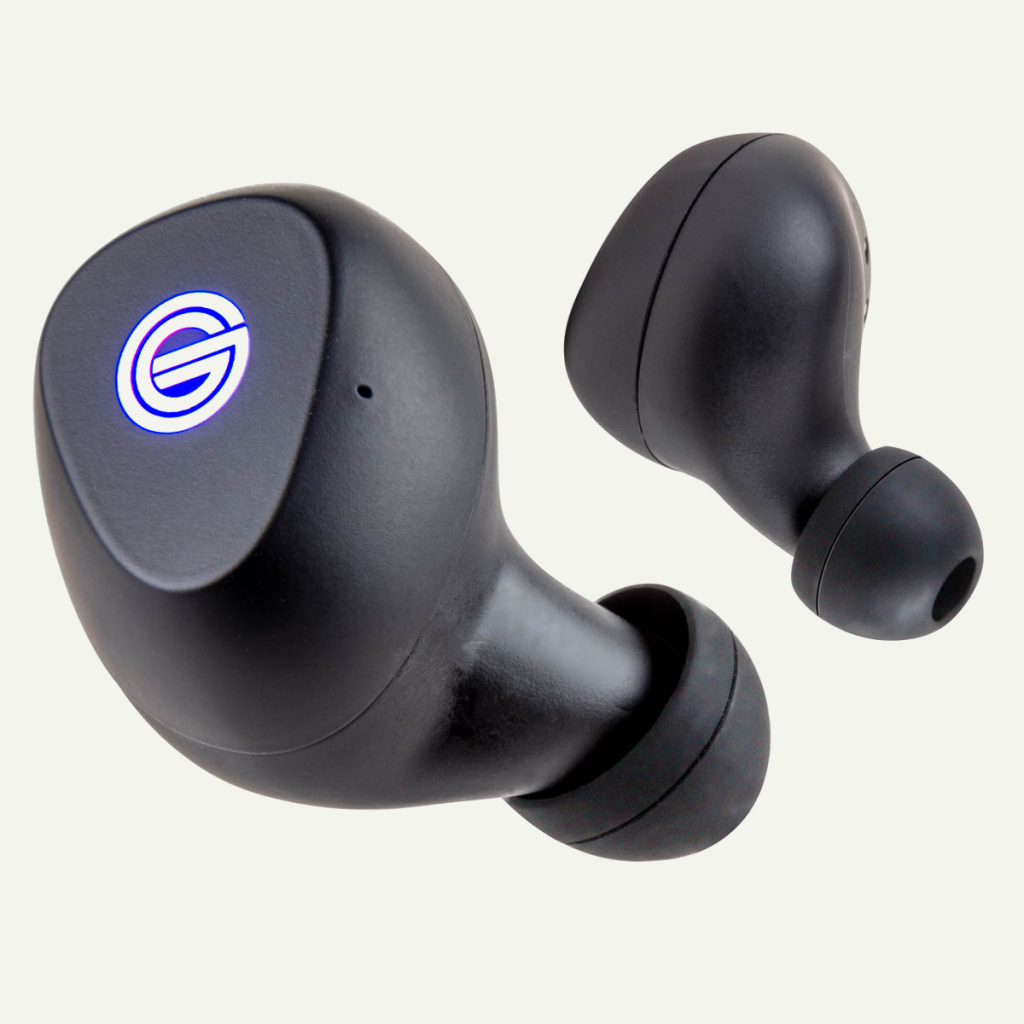
Grado GT220 Bluetooth Wireless IEM Universal Fit Headphone $259
Without a doubt, the Grado GT220 Bluetooth Wireless IEM Universal Fit Headphones are the most comfortable and musical of all wireless IEM headphones to hit the market. Musical and linear to the max, they will not compress or buzz with the most bombastic material. Two years of research and listening by Grado's golden eared audiophile/engineers have created real imaging, sound staging, depth, and truthful musical values in an IEM from a single driver.
Integrates and controls your phone and DAP from a tap on the left and right ear module with tons of features available. Isolation is complete. Multiple ear cushions are supplied to provide excellent comfort. A helpful manual is included. I recommend you turn off any equalization in the music circuit of your phone or DAP to receive the most definition and smoothest most elegant response. You get 6 hours of great music from a single charge.
With highs as silky and detailed as you could want, mids as smooth and analog as top headphones costing ten times their cost, and bass that is uber detailed and extended to the center of the earth, the Grado GT220 costs just $259. I do not know how they did it and frankly, I do not care. I am personally buying the review sample and an extra pair while I can get them. Congratulations John Grado.
Read more HERE
Unique Innovation Technology Perfect Musical Purifier Speaker Cable V2 $2400
A full review is in progress, but I could not wait to tell you about UIT's newest speaker cable that outperforms any cable I am aware of under $3000 per meter and compares favorably to cables selling for $4000-5000 per meter! Sold only direct, no dealers, designer Mitch Ko once again smashes the competition with cables created to emulate fiber optic types operating with extreme tranparency. Add to this, no increase in price at $2400 for the first meter including top quality spades or locking banana plugs.
Frequency response is even and predictable, definition is extraordinary, sound staging is huge but well organized, imaging is close to the best of the best, and deep background coloration is inky black enhancing the imaging relief. Made of copper, silver clad copper, and pure silver wire, there is a special module in the center of the cable which filters/enhances the sound, breaking ground noise and eliminating EMI/RFI. This design is present on everything UITaudio produces. The excellent shielding, creative wire construction, and the module combine to make every model UIT produces including their USB cables top of class. Their new V2 speaker cable is stunning.
UIT audio deserves recognition for taking a great product and making it better. So far,I have been unable to identify any negatives for these beautiful and flexible speaker cables. The locking bananas are first rate. The spades are excellent as is the solidity of the terminations.
Congratulations Mitch Ko and UITaudio!
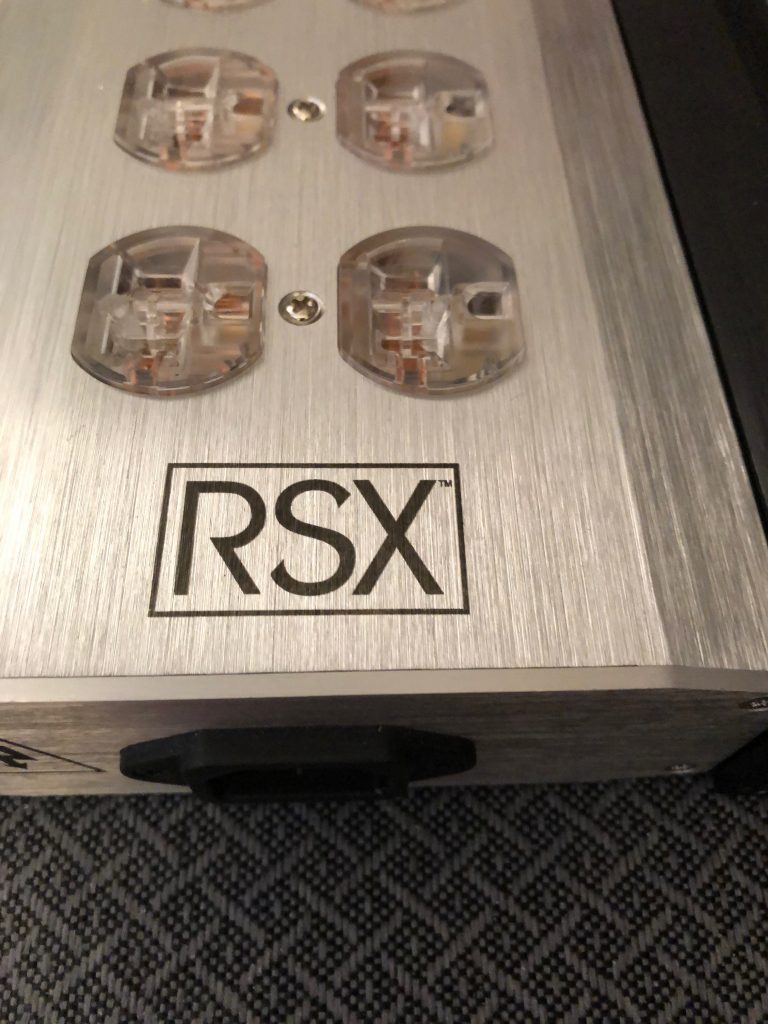
RSX Technologies Multiple Award: Beyond Power Cord, Beyond Phono Cable, Power 8 Power Conditioner
Created by Roger Skoff of XLO fame, the RSX top offerings are his best work ever. The Beyond Power Cord is super detailed, extremely dynamic, and highest audiophile quality. His Beyond Phono Cable is stunning with no discernable colorations and definition galore. The Power 8 Power Conditioner is as good as the power cable you may use with it and very cost effective. All are priced at the bottom of their audiophile class and are as good in every way as models costing double or triple the price.
From RSX...
RSX cables are created by cable industry veteran, Roger Skoff, best known for his earlier XLO Electric cable designs. Now more than a decade later, using materials and technology that were not available when he was creating XLO, comes RSX Technologies. All models - Prime, Max, and Beyond - make use of 100% long crystal, "laboratory grade" copper, proprietary air and advanced fluoropolymer dielectrics, and high-contact, low mass connectors.
After celebrating 55 years as an audiophile, I have never seen a company begin with so many products achieving top performance right out of the gate. With Roger Skoff's extraordinary taste levels and time honored engineering genius, I really should not be surprised. Congratulations Roger and RSX Technologies.
Stu McCreary
The Denafrips Pontus DAC $2298
The review is upcoming, but it's just too good not to mention here.
While building my new "reviewer's system," I had the pleasure of auditioning three DACS that just happened to be designed by three different Chinese engineers. The designs styles were one delta/sigma representative and two R2R DACS. Each one of the designers is highly regarded amongst Chinese audiophiles and has begun to gain recognition and a following here in the States. The companies represented were Gustard, Holo Audio and Denafrips. Besides being Chinese companies, the other thing these three have in common is that their principal owner/designers are all passionate audiophiles and I mean that in the old school, serve the music above all else, understanding of the term.
The Denafrips Pontus was last reviewed here at PF by our own John Zurek in Issue 99, October of 2018. John had very nice things to say about the Pontus and ended up buying the review sample. Since two years had passed, and there certainly had to be some refinements made, I thought I should give the Pontus another look. I had a delightful experience with Alvin Chee, of Singapore's Vinshine Audio, the world-wide distributor for Denafrips, who hooked me up with a Pontus review sample and answered, kindly and intelligently, every single question I had about Denafrips and their Pontus. One of the most important questions was, "what has changed with the Pontus in the past two years?"
Alvin's response was,
- Beefed up power supply with shielded o-core transformers
- German WIMA Film Caps , and
- Upgraded DSP board
This was the version of the Pontus that graced my listening room and as I told Alvin last month when he asked me what I thought of it, I said that I was definitely keeping it for the long term and if he wanted it back, he'd have to "pry it from my cold, dead hands."
In my DAC rating scheme, the Pontus is number one with a bullet. It's price of $2298 in Singapore dollars, puts it at about $1700 USD and I'm confident that nothing under $2000 will come close, they won't even make it into the same neighborhood. I told Alvin that its the high-end analog turntable of DACS, no, it's the tubuliscious tube amp of DACS, no... it's both. No kidding. There is an analog like flow and suave, silky smoothness to the sound it produces that reminds me of my old VPI rig. There is a rich, textured midrange and a jaw dropping, holographic soundstage that is, to me, the antithesis of dry, flat, solid-state digital. It has that same kind presentation, that "valvular verity," if you will, that I only hear from the finest of tube amps.
My full review is coming, but I couldn't let 2020 go by without singing the praises of the Denafrips Pontus. I get really excited when I find a world class high-end product that the rest of us can actually afford. As my pal Rich Brkich of Signature Sound would say, "this is just stupid good!"
VTV Purifi Audio 1ET400A Amplifier with VTV Vacuum Tube Buffer $3720
The review is upcoming, being compared to the PS Audio M1200. Again, too good a deal to wait on the review.
I was on my personal quest to re-build my pundit's review system and one of the biggest decisions was of course, "what amplifier do I choose?" You can call me the Audio Rip Van Winkle who fell asleep back in 2003 under a Bel Canto Evo 200.2 tree with Tripath Class-T modules dangling from the branches. I awoke to a brave new Class-D world with magic modules for the masses, read, "mmm-good," from ICEPower, Hypex, and Purifi. With the latter, there's even some Bruno guy from Brussels who's apparently full of Class-D cerebral muscle, and if you can speak-a his language, he'll make you one heck a Vegemite amp sandwich. I'll tell ya, it's a great time to be awake in this crazy audio world.
So I decided to do a mini-version of the insane "tube-fest" series (where I waded through over 35-tube amps in less than a year and nearly lost my mind) and assembled some worthy "players" for my very personal audition. The players, or should I call them "bachelorettes," vying for my amp affections, were my trusty Bel Canto Evo's in differential mono mode, the brand new PS Audio M1200's (tube buffer with ICEPower modules), the venerable Benchmark AHB2, and a new comer called VTV Audio who, like the M1200's, also used a tube buffer and a Class D module.
After almost three months of intensive listening and tweaking, it's the VTV Purifi monoblocks that get my writer's amplifier choice award. Warren Coleman's "Vacuum Tube Values" (VTV) monoblocks edged out PS Audio's M1200s for this award, even though I feel the M1200s are the better reviewer's tool amp and have decided to keep them for the long term. The reason for VTV's victory is three-fold: price, performance and options.
The VTV Purifi monoblocks start at $3100 for the pair and go up to $3720 with the tube buffer that I chose. That's a very good deal for monoblocks made with rugged engraved cases, the Hypex SMPS1200A400 power supplies, the Purifi 1ET400A Class D modules and tube buffer boards (with matched Genelex Golden Lion 6922) designed by Andrew Sparks of Sparcos Labs—the company of well earned opamp and voltage regulator fame.
Although the VTVs did not quite reach the same level of realism and holographic imaging as the M1200s, they came admirably close. Fans of valvular verity will absolutely love the richness and body of the VTV's midrange and will feel right at home with the impressive height and depth of the very palpable soundstage. Back in 2003, if you had told me that you could get this kind of performance for under $4K, in a Class-D amp no less, I would have called you crazy—tube fest, 35+ amp, certifiably crazy.
The bonus feature that really puts this over the high-end value top for me is the fact that you have unprecedented tuning options with this amp. The tube buffer board that Andrew Sparks designed has a unique and creative topology and being one of the best opamp guys in the biz, you know he had to feature opamps in the circuit right along with the tubes. He has provided standard eight pin sockets for the dual opamps and seven pin sockets to use double the number of single opamps, if you so choose. This opens up a world of opamp flavors for you to fine tune your amplifier's sound. I played with singles and duals from Sparcos Labs, Sonic Imagery, Weiss, Dexa, and Burson. There are so many variations on the theme, each with their own flavor notes, that I'm convinced that anyone with a good ear and some patience, can find their perfect system match. I hear that Warren is setting up his own opamp borrowing library, so that customers can drive themselves perfectly crazy, like I did. I consider this amplifier a can't lose value.
Marshall Nack
AudioQuest Dragon power cords $4400
This was the year I discovered new brands of power cords. I had not heard AudioQuest wires in a number of years—the brand wasn’t on my radar. That left me unprepared for their Dragon power cords.
Paragons of linearity and even-handedness, the lack of boom, sizzle, or other forms of bombast caught me off guard. Their presentation did not favor any frequency band, nor romanticize the sound with mid-bass warmth, extra bloom or air. Everything was in its place without added emphasis, and it’s all good—they score top marks everywhere on the audio report card. The icing on the cake is they are the antithesis of lean and sterile, with a voicing that rests comfortably on the ear.
Frankly, I was amazed at how un-Hi-fi they sound and surprised by their sophistication. At their price point, the AQ Dragon power cables set the bar at the highest level.
Read more HERE
Audience frontRow powerChords $6700
In the Battle of the Bulging power cords now waging for my amps, the frontRow powerChords from Audience were the second brand to arrive. (And, actually, they are the least oversized.) This is another brand I’d heard about for years, but had never made acquaintance.
In short order they wowed me with their sonic prowess. Their performance has been nothing short of stunning, first class everywhere I deigned to focus on, leaving me virtually nothing to quibble about—let alone criticize. They are particularly distinguished for timbres that bring a splash of exciting color and texture, and a low-end that is markedly tuneful and potent. They sound refined and, at the same time, bold and dynamic.
The frontRow powerChords from Audience are definitely a contender if you’re shopping at this price point. They have proven themselves worthy.
Read more HERE
Nordost QKORE Ground Products $2499.99/$4999.99
The QKORE Ground Products from Nordost address ambient RFI that has found its way inside your components, an issue ubiquitous in modern environments. The noise reduction benefits are so obvious and impressive that they are considered to sell themselves, so to speak—further convincing is unnecessary.
The design is simple and elegant. Nordost developed very low resistance wires to take advantage of ground currents’ tendency to flow in the direction of least resistance (unlike music signals, which flow from component to component). When these QKORE Wires are connected between the component and the QKORE box, artifacts riding on the ground are attracted to the wire and travel along it down into the QKORE, where it is deposited in a Low-Voltage Attractor Plate (LVAP). The ground pollution follows the path of least resistance. What you’ll hear is reduced brightness and smoother treble, with enhanced transparency and resolution.
While not cheap, I acquired a full suite because, once installed, they proved indispensable. This is the kind of upgrade that doesn’t come along every day.
Read more HERE
Robert Neill
Bach Cello Suites, Alisa Weilerstein, Pentatone PTC 5186 751.
I am a big first impression guy. I never leave it at that, but I take my first hearing very seriously. And my first impression of Alisa Weilerstein's Bach is its beauty. If this is the French style, so be it. But knowing both Fournier and Gastinel well, I hear something beyond their kind of beauty here.
Weilerstein's own word for what characterizes her interpretation is "joy." Not, as it turns out, ebullience, excitement, enthusiasm, but joy as in grace and confidence. Make a joyful noise unto the Lord…or Saint Cecelia. She writes in the album notes of her expectation that she would wait until she got older to record this music (she is 37), but decided that something would be lost to her if she did that, a sense of freedom. She says the Bach Suites invite a degree of freedom that she fears she might not be capable of as she grew older and too set in her ways—and too respectful of both the music and other cellists. Fear of the definitive. Perhaps, fear of losing the beauty as she understood it.
This is what shows in her playing. The joy that comes with affection and freedom rather than an excess of respect. Her touch is moderately light—she does not dig into notes as some others do. There is not much drama, no artful pauses for effect, changes of pace. There is no earnest striving. We are mostly conscious of melodic momentum, of a constant moving forward, moving on. This does not result in frivolity or a lack of seriousness. Rather, we feel a lack of self-consciousness, of conspicuous rhetoric. If this sounds like maturity, that's how I hear it: a Bach who takes the long view of things, rather than the mercurial urgency of the present.
Isn't this what we come to Bach for? Aren't the rare performances of this music that achieve this quality the ones that ring most true? I collect sets of Bach's Suites because I have come to realize that, as Weilerstein writes, "The Suites are too rich with ideas, too full of subtleties, and too dense with the burden of history for any particular interpretation to be exhaustive, any particularly choice definitive."
Regretfully, there is no information about her in the program notes. All if I know is that she teaches at the New England Conservatory and is the daughter of the Cleveland Quartet's founding first violinist, Donald Weilerstein. What I can tell you is that her Bach has become my all-time favorite.
Thomas Adès, Works for Solo Piano, Han Chen, Naxos 8.574109.
Boiling a truly major composer down to his essence seldom disappoints and this is the case for Adès. I've never been sure about his opera, Powder Her Face, but listening to it in "concert paraphrase" for solo piano, I am once again reassured that he is who he is. This entire album sits us down with the composer where most composers start their creative work—at the keyboard—and lets us hear the birth of Adès' music. Young Taiwanese American pianist Hen Chen is a perfect musician for the occasion. One needs a wide open mind and fast hands to play Adès piano music and that describes Han Chen perfectly. A graduate of Julliard, we are told he is currently studying with brilliant modern music performer Ursula Oppens, so he's in the right place.
Seven solo works comprise his outing here and all move us in different ways. Darkness gets startling new clothing in "Still Sorrowing" and "Darkness Visible," so that we barely recognize it, until we do. Simplicities bloom into complexities, then resolve themselves back. In the three-part work, Traced Overhead, Adès leads us into a poignant dissonant thicket, which we find we are loath to leave. In Three Mazurkas for Piano, we learn what Chopin might have composed had he lived two centuries later—with a modernist disposition and a more crooked and deliberate mind.
The plaintive, elegiac Souvenir concluding the program comes as both relief and and shock after the high energy dramatics of the works that precede it. This quiet voice appears occasionally in Adès' oeuvre and always comes as an unexpected and welcome blessing. In this album it serves as a benediction.
If you miss this CD, you will (re) discover it years from now and wonder how you could have done so.
Christian Wolff, Complete Music for Violin and Piano. Marc Sabat, violin; Stephen Clarke, Piano. Mode Records 126.
Out on the periphery of the musical world, far from Yeats' 'center that cannot hold' and outside Eliot's 'tradition, anything goes, right? For me a few things go out there, but not too many. For example, I find the better known Morton Feldman, a composer often associated with today's subject, unlistenable. For me, the king of out there is Christian Wolff (b. 1934) and even he doesn't always go. He's wonderful in Two Orchestral Pieces (New World Records). And on this album, especially in "Pebbles," equally so.
Judging music that we call avant grade is a highly subjective matter. I think lovers of music are better at it than students of music. Music lovers are more concerned with whether something works than how it does, or doesn't. Here a piano and a violin speak to each other, speak to us, sometimes singly, sometime together. They speculate, propose phrases, dispute, collaborate. But because they are wonderful musical instruments and not people, we don't have to listen to ideas and arguments, just to the flavor, color, and play of the conversation. It as if we are visitors from another world listening to cerebrally untreated reality.
This is more engaging than I make it seem. As I listen, I am watching a bright red cardinal and a brilliant yellow gold finch negotiate their ways around each other on our bird feeder; and their connection to the music is unmistakable. Their colors and movements are enough… they are everything.
Mark Pearson
KECES Sphono Phono Stage $2600
The KECES Sphono & Sphono Preamplifier is my nomination for Analog Product of the year. The KECES Sphono and its outboard power supply represent a giant bargain for the feature set and sound quality they bring to the table. You can read my review here:
The KECES Sphono has four inputs with two for MM cartridges and two for MC. The Sphono has switchable mc gain from 60dB to 66dB. The phono circuit is true dual mono and it's balanced. Oh, and it sells for $2600. I doubt the Sphono has many competitors that are producing phono preamps at this price point that sound as good as the Sphono and can accommodate four separate cartridges. The Sphono is well built and it's dead quiet. It was truly a pleasure to review the Sphono and more of a pleasure to listen to it during the time it spent in my system.
Read more HERE
Greg Petan
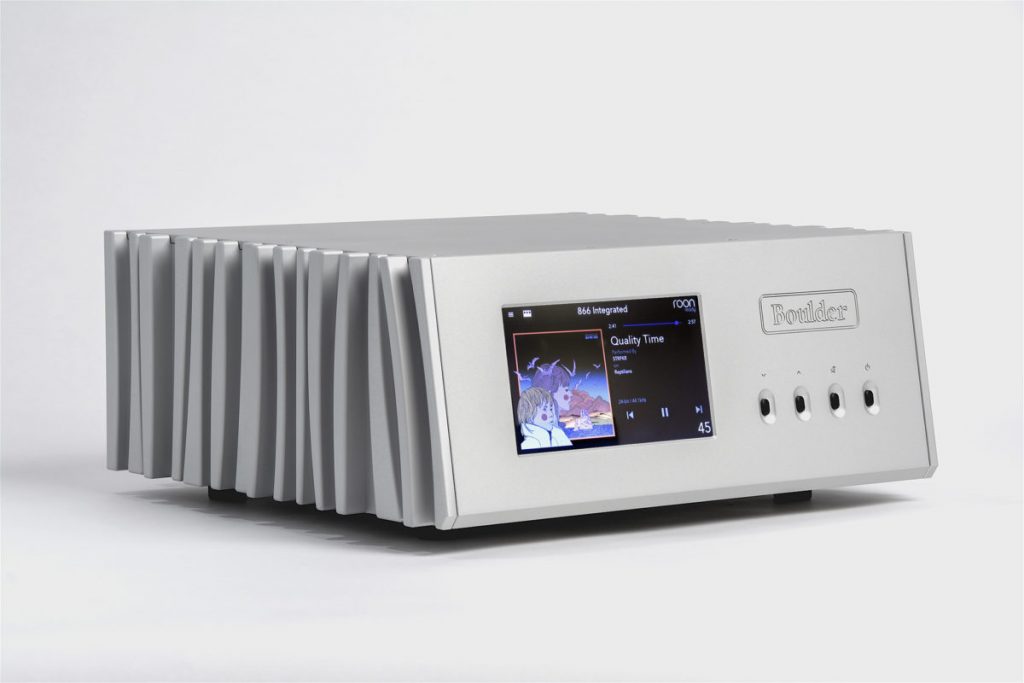
Boulder Audio 866 Integrated Amplifier DAC/streamer $12,250 (analog) or $14,450 (digital equipped and Roon enabled)
On the heals of the review of the outstanding yet affordable Boulder 508 phono stage, comes the new 866 integrated amplifier. This 200-watt integrated DAC/streamer not only impressed me, it continues some eight months later to surprise me the deeper I indulge my music collection. Streaming from Tidal, music is supremely fast, open, and grab you by the scruff of the neck engaging. Bass reach and power confounds when looking at the rather petite chassis. On top of the sonics, user experience has finally caught up to the promise of the convenience offered by streaming. The 866 is a not only a joy to listen to, it’s a blast to use.
Read more HERE
Silversmith Audio Fidelium Loudspeaker Cables $995/8ft
Having reviewed the the pricey Silversmith Palladium cables back in the day, I was thrilled that Jeff Smith was back with a new offering in the Fidelium. I was also afraid to ask how much they were. When I heard $995/6ft ($1,195/8ft), I was struck into a state of cognitive dissonance. That dissonance remains as the Fidelium is not some distilled design meant to hit a price point. This ribbon alloy cable is a masterpiece of transparency, openness and smoothness. Having lived with the costliest wire on the planet, I can say with certainty the Fidelium has achieved cost no-object performance for under a grand. (Review forthcoming)
Boulder Audio1108 Phono Stage $18,000
I wasn’t looking for love. I was perfectly content with Boulders 508 phono stage. But I just couldn’t help myself. I save monogamy for my 30 year marriage. When it comes to audio, I'm a scoundrel. I had to give the more than three times the price $18K 1108 a try. As good as the 508 is, the 1108 expands the analog experience in all directions. It’s loaded with features and capable of handling multiple tone arms. It must be all that clean mountain air they are breathing out in Colorado as the 1160 is all that. Clean, clear, open as the blue sky yet solid as the rocky mountains. This is a final destination phono stage for me. (Review forthcoming)
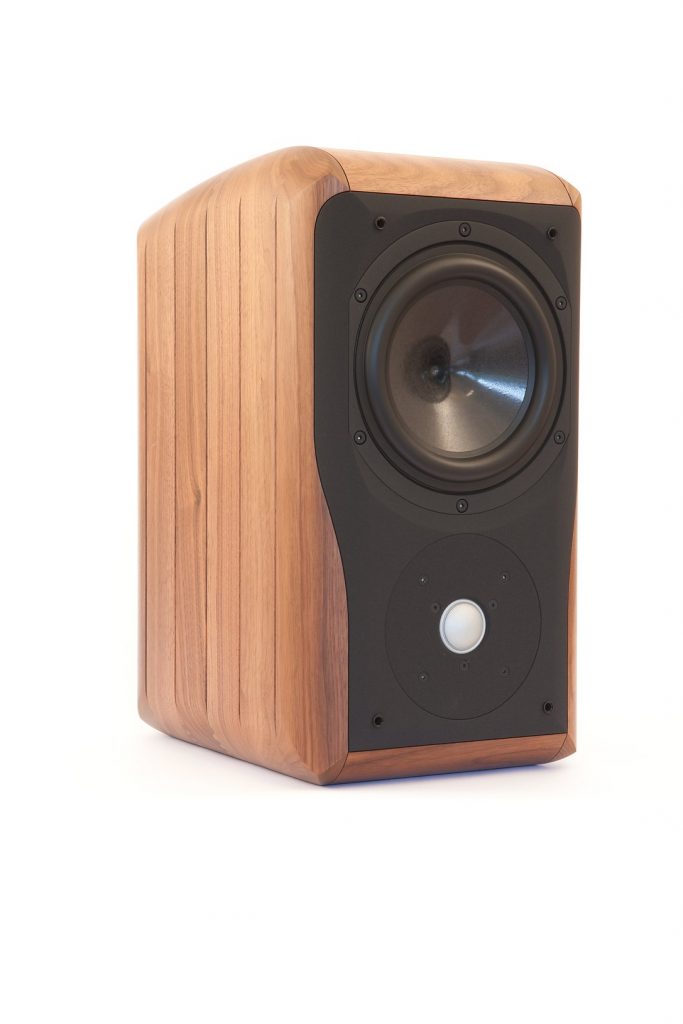
Chario Sonnet Loudspeakers $8200 a pair including stands
The Chario Sonnets are rather compact stand mounted monitors that I would have thought were only for the smallish room. Most compact monitors I have heard run out of gas pretty quickly. I was surprised when I auditioned them in my cavernous space that they held up very well. Not only did the have great out-put, they sounded really special. The warmth and texture of music was the star of the show. Very engaging and musically correct, you will be too busy enjoying music to notice how stunning they look.
Read more HERE
Robert Youman
Synergistic Research PowerCell SX Power Conditioner $12,995
At $12,995, when bundled with the flagship $10,000 SRX Power Cable (for 110V applications), the PowerCell SX borrows its technology from the now sold out limited edition Galileo PowerCell SX, which was priced at $22,995 with the same SRX Power Cable. The total allotment for the Galeleo SX was for 25 units and it sold out within months. Thankfully, the folks at Synergistic Research were able to move forward with the SX and much of the same design at a lower price point, a prime example of trickle down technology at its best.
One of several enhancements over the prior generation of standard Powercell 12 designs includes almost four times the amount of conditioning with eleven active electro magnetic (EM) cells versus six. These EM cells are 25% larger and are also biased with a Schuman Resonance generator. Additional upgrades are the new Orange Capacitors and UEF Orange Duplexes—both with state of the art Orange Fuse Technology. The SX even offers a new front panel amp meter and large plexiglass window on the top of the unit that will allow you to view and appreciate the design and craftsmanship of the internal circuitry.
Lastly, one of the key differences over and above the PowerCell 12 for both the SX and Galileo SX is the use of 69 silver throughout their topology and build. This includes a run of almost 59 feet in total. The Galileo SX used an even higher grade of 69 silver which affords the SX the more value based MSRP but still with outstanding performance and results.
The PowerCell SX has the ability to transport your system amazingly close to the sound of the actual event and without major upgrades to the rest of the system—closer than any other cable or power conditioner that I have heard in my listening room. Truly a wonderful addition to any system and possibly the most impressive product that I reviewed this year!
Read more HERE
Valve Amplification Corporation (VAC) Signature Mk IIa SE Line Stage w/Phono $19,500
At $19,500, the Signature is the original building block that introduced the basic design principles found in all contemporary VAC preamplifiers—a fully balanced, zero feedback, and transformer-coupled Class A1 triode topology. The Signature's line stage is hand wired, and has no coupling capacitors that might impact the sound quality of the presented load.
The Signature offers six standard line inputs (five w/phono). Three have unbalanced (RCA) inputs. Two have both unbalanced (RCA) and balanced (XLR) options. There is also a fully balanced Cinema Bypass input. Lastly, there are two sets of unbalanced (RCA) and two sets of balanced (XLR) outputs.
For an additional $6500, the optional phono stage provides one set of either unbalanced (RCA) inputs or fully balanced (XLR) inputs for one moving coil (MC) cartridge, and a second set of unbalanced (RCA) inputs for one moving magnet (MM) cartridge. Tubes used for the standard configuration include 6922 (two) for the linestage and 12AX7 (six) for the phono stage.
I had a bunch of fun with the VAC Signature Mk IIa SE. It opened my eyes to the potential that was still hidden in my digital and vinyl collections. The phono section in particular was an absolute bargain performing well beyond its price point. State of the art industrial design, superb build quality and cutting edge performance, I can only imagine what the VAC Master and Statement line stages might provide. The best compliment that I can give the Signature is that I purchased it.
Read more HERE
dCS Bartók DAC $14,500
In addition to the impressive myriad of standard interfaces and formats that are supported (please see the dCS website), the key technologies that differentiate the dCS Bartok from the competition are MQA, RingDAC, Mosiac, Network Bridge, and Variable Output. The dCS implementation of MQA is considered by many as the premier offering of this format in the industry—for both execution and sound quality.
In terms of processing, the fundamental core of the Bartók, like all dCS DACs, is the dCS RingDAC technology that combines both proprietary hardware and software. The RingDAC is a very sophisticated if not complex design, that utilizes a network of FPGAs (Field Programmable Gate Arrays), DSPs, and a fully-discrete digital-to-analog conversion board (Analog Board) to process all incoming digital signals. The RingDAC Analog Board is a completely balanced, differential dual-mono design with a discrete fully differential Class-A output stage.
The Mosiac application can support the following: Deezer, Qobuz, TIDAL, Spotify, Airplay, Internet Radio, Podcasts, UPnP, and Network USB Storage. For those Roon users out there, Mosaic does have an ability to utilize Roon as a media management platform with Mosaic as a Roon Ready zone.
Variable Output eliminates the need for a standalone preamplifier, and can be directly connected to an amplifier via XLR or RCA. Network Bridge supports home network connectivity for NAS (network attached storage) devices, and Ethernet connectivity for streaming and utilizing online applications like Tidal, Qobuz, Spotify, and Deezer.
At $14,500 as a standalone unit, and $17,250 with an integrated headphone amp, the dCS Bartok is not an inexpensive investment. However, the Bartók might just be the clear game changer for the many digital newbies still out there, and also for those seeking a worthy, if not significant improvement over their current digital front ends. The dCS Bartók will more than open your eyes and ears—it's an absolute killer machine!
Read more HERE
Friday Night In San Francisco, John McLaughlin, Al Di Meola, and Paco De Lucia (Impex Records 45 RPM LP)
I reviewed the Impex 33 RPM reissue of this same title back in 2018. That was an easy rave review to write, but this new 45 RPM pressing, again from Impex, takes the music to a new level. In addition to the original Columbia LP pressing (which is no slouch on its own), I also compared it to the Sony Gold CD, the Sony K2 SACD, a Sony DSD download, the Speakers Corner/Phillips 180 gram reissue and the Original Recording Group (ORG) 180 gram 45 RPM reissue.
The differences were not subtle for a recording that I thought was already impressive on all of these releases. This Impex reissue was mastered by Bernie Grundman who also personally cut all the lacquers. Dorin Sauerbierat at RTI did the plating and it was pressed at RTI under Rick Hashimoto's supervision. It astounds me that there was still more information to dig out of those master tapes. Congrats to the entire production team as they have really stepped up their game against some very stiff competition. Also, congrats to the Abey Fonn at Impex and Kevin Berg at Elusive Disc for driving this project forward. It was well worth the effort!
Talk about tangible! There is a correctness of presentation and a visceral like rhythm and drive that is now demonstrated well beyond what I heard before. All of this is executed with a liquidity and timbral purity that is simply amazing. These variables are rarely placed in the proper perspective. Most of the time the sound leans to one side of the fence or the other. Here, there is a balance that is just thrilling!
Lets not forget about what is most important—the music! Typically used as a standard demo at most audio shows, I feel like this recording is much more than just an audiophile favorite. These highly respected if not world class guitarists were at the top of their game at the time and were virtually on fire in their playing. Now, you can easily tell how much fun they were having as was the audience. The emotion really shines through for both which is always so much more enjoyable. This is an important recording and this new reissue is highly recommended!
Read more HERE
Michael Zisserson
The Audion Monoblock Amplifiers $7500
Do you want to know a secret? I despise Class D amplifiers. No matter how many times I hear the finest Bluetooth speakers, to the ultimate in Class D amplifier refinement, their over-caffeinated sonic signature has never settled well into my ears. That is, until AGD Productions was kind enough to allow me to evaluate The Audion monoblock amplifier.
The Audion is the little sibling of The Vivace mono block amplifier from AGD Productions. In no way does this Class D masterpiece, utilizing Gallium nitride (GaN) technology, sound small or jittery. I can easily hold one of The Audion monoblocks in the palm of my hand, but their performance was on par with some of the best amplifiers I have heard to date.
It is rare that something legitimately new happens in the world of audio. Most "new" technologies are just a re-spin of something old. The new, GaN transistor technology, has shown that a mature Class D product can be competitive on the high-end. The Audion needs to be on the radar of all manufacturers, waking them up to what is now possible. GaN technology offers a lot of punch in a very small package, and does so efficiently, with little heat, and with high reliability. The sound is simply breathtaking. What more could anyone want in a high-end audio product?
The Audion by AGD productions is a dramatic leap forward in Class D amplifier technology and should be on the list of anyone looking to build a serious HIFI rig. The Audion's final noteworthy point is value. The asking prices of $7500 in chrome and $6800 in matte finish may seem hefty, but The Audion's removable amplifier module makes them future-ready. Their sonic performance put them very close to an amplifier that costs double their selling price. I was very impressed by The Audion, and I believe you will be, too!
Read more HERE
The Clarus Duet $1250
Clean power is something that has been, and likely will continue to be, a point of contention in audio. As with trying to define the line of demarcation between a brown dwarf star, and gas giant planet, the more you understand about tidying up the incoming power to an audio system, the more complicated it gets. Clarus Audio, and legendary power product expert Jay Victor, teamed up to deliver an elegant solution to one of the largest challenges in power filtering: Delivering clean power to a power amplifier, without restricting current.
The Clarus Duet, is a small, unintrusive line conditioner that provides power for a pair of monoblock amplifiers. Or, a set of amplifiers use for bi-amplification as I used in my original write-up of the Duet. The Duet utilizes a proprietary "C-Core" filter choke that dramatically reduces the typical problems, like magnetostriction, found in the physically large filter components of a high-current line conditioner. The duet takes its filtering and protection one step further by utilizing a surge suppression scheme with Thermal Metal Oxide Varistors (TMOVs).
Aside from a measurable result, I also got a significant audible improvement when listening through the Duet, verses plugging my amplifiers directly into the wall. While this should not be a surprise, it is unique to the Duet. Nearly every line conditioner I have experienced removes noise, but limits the current available for dynamic changes in the music. Until the Duet, it had seemed like line conditioning for high current amplifiers was a zero-sum game. On one hand, a power conditioner would remove line noise from the sound, yet on the other, it would limit dynamics. With no trade-off, and nothing but upside to be had from the Clarus Duet, it seems to have made the impossible, possible!
Read more HERE
John Zurek
Meze 99 Classics Headphones $309
I've lived with the $309 Meze 99 Classics since I reviewed and enthusiastically recommended them back in June 2020. Since then, they have become my everyday go-to headphones. Yup, they won the starting position from my more expensive HiFiMan 560 planars. Since having the 99 Classics around I've really become a fan of closed-back headphones. I'm not about to sacrifice audiophile-quality sound just for isolation, but, as with any design there are trade-offs. A set of closed-back cans lets me move around the house and the yard (with my portable player), and just listen to music without being disturbed. In fact, I'm listening to more music than ever in part because of these Romanian gems.
Although the stock version is quite satisfying, the Mezes really benefit from a cable upgrade. I'd at least go for Meze's own 99 Series Silver Upgrade cable at $119, which in my book is a bargain. The build quality of these cans is really exceptional at this price. I've had zero issues, and no degradation of any of the parts after months of heavy use.
None of this would mean squat if they didn't sound great. They do. They will not trounce the premium kilobuck headphones out there, but in their price range, and even at 2 to 3x above, they are hard to beat especially with a cable upgrade. The more I live with them the more I like them. These are cans that are very well rounded, easy to drive, and play all types of music well.
I'm starting to think their biggest strongpoint is not detail, dynamics, comfort, generous tight bass, or accurate tonal quality (yes, they do have all these) but their great sense of timing. They get my head bobbing and my whole body moving, which is quite an accomplishment.
We need more products like The Meze 99 Classics. At $309 they embody outstanding value. They push my happy button much like my first Walkman did back in the last century. But, while the Walkman was strictly a lifestyle product, the 99 Classics not only agree with my lifestyle, but also give me audiophile-quality performance. After living with these cans for five months I can still give them an enthusiastic recommendation.
Read more HERE




